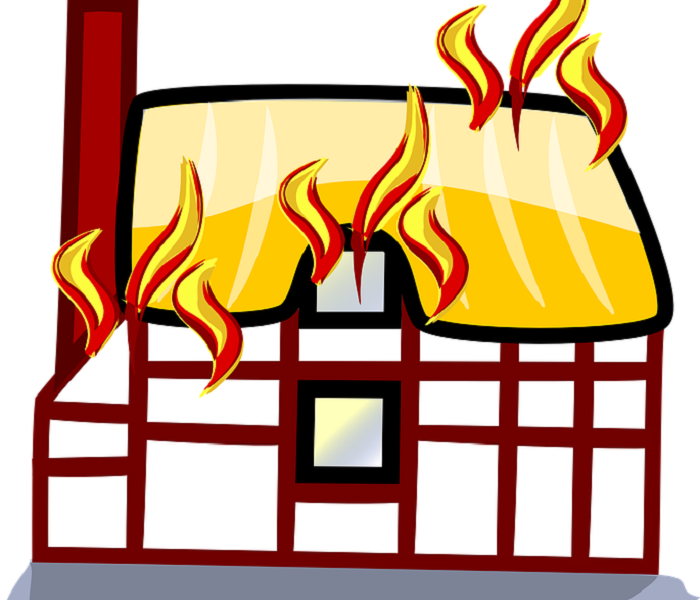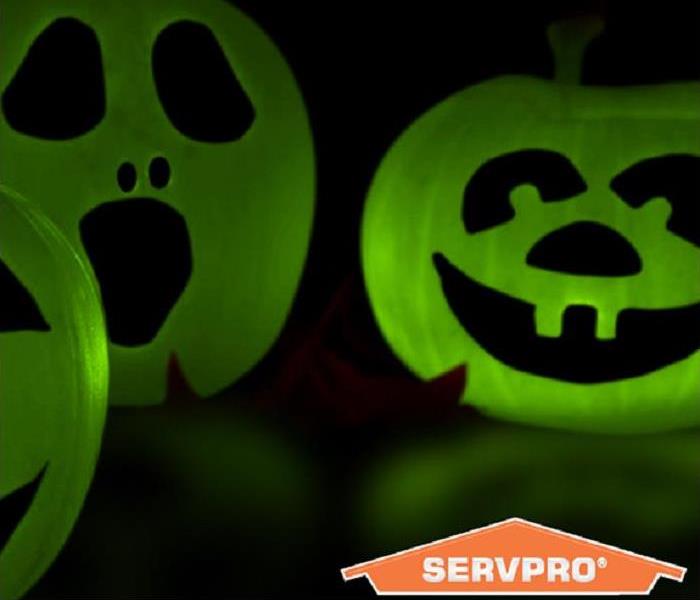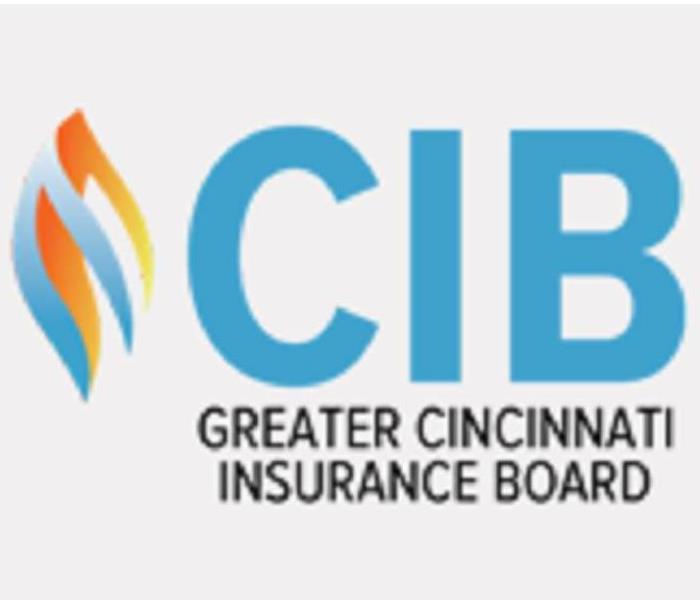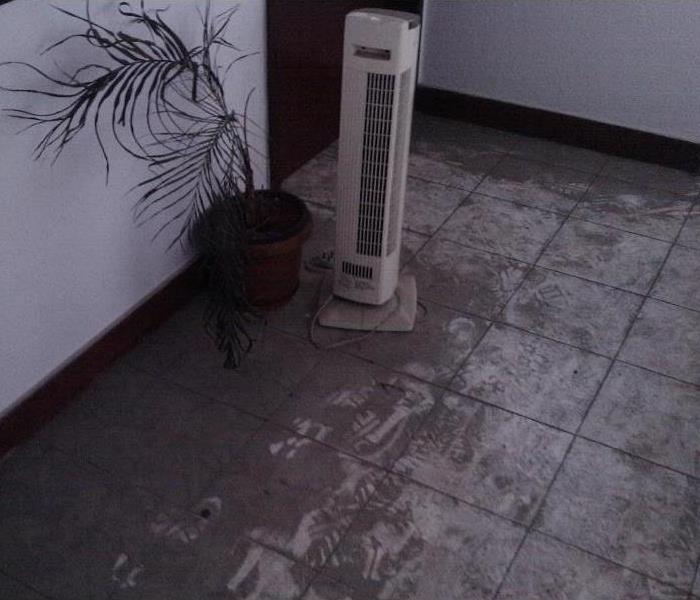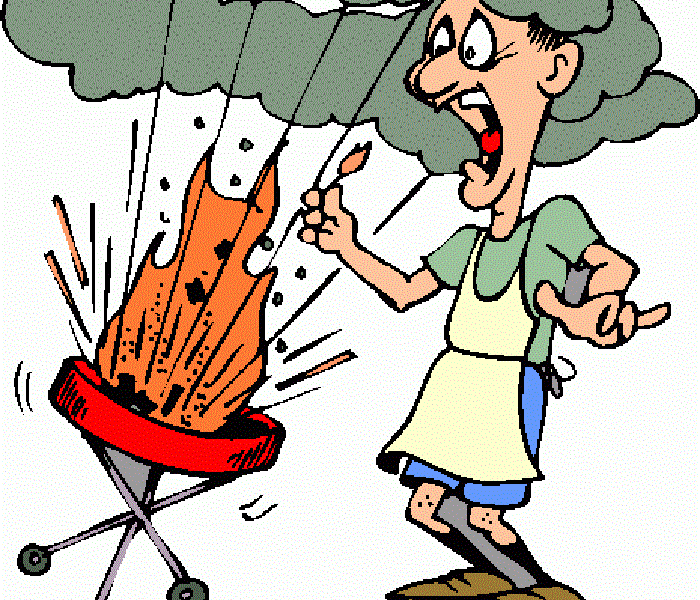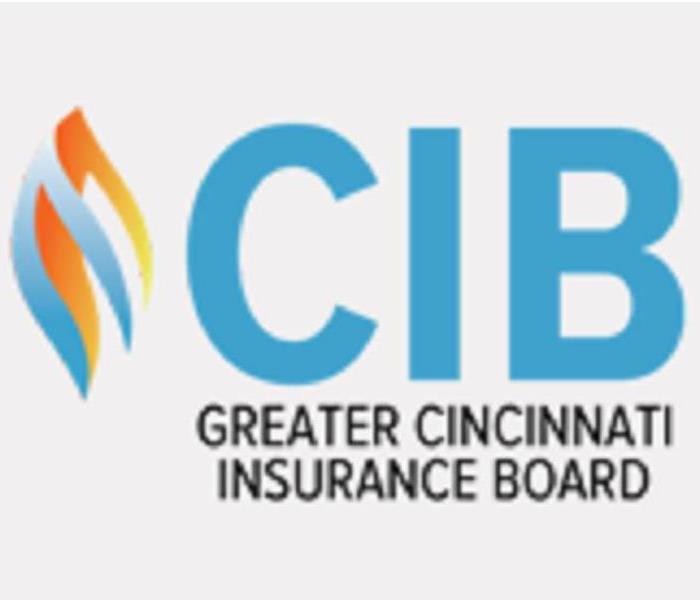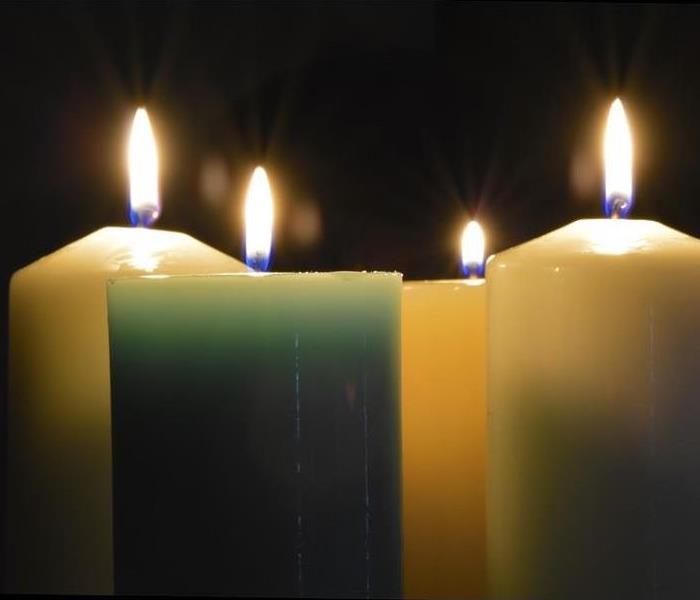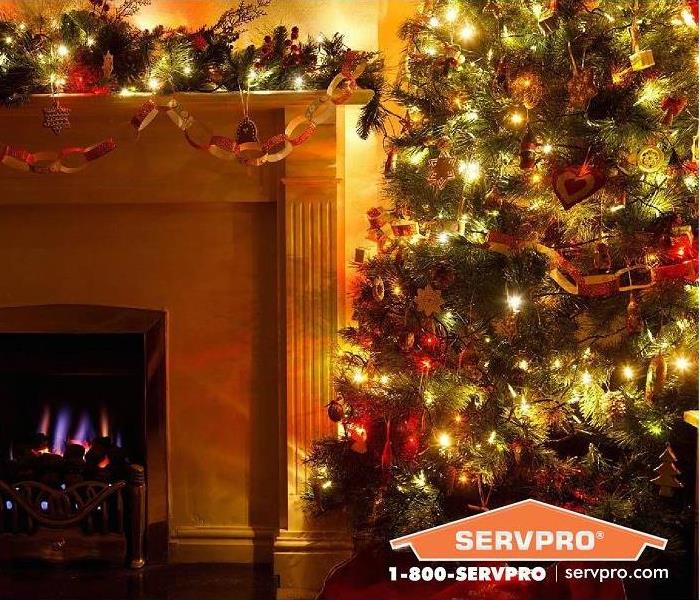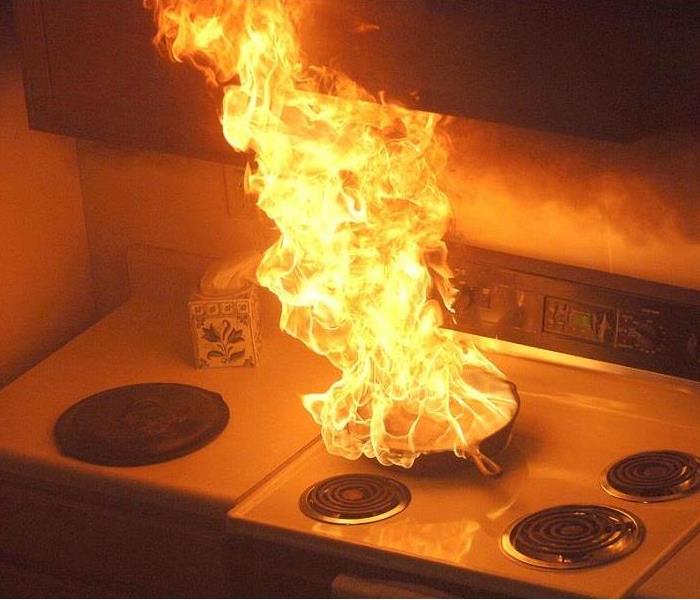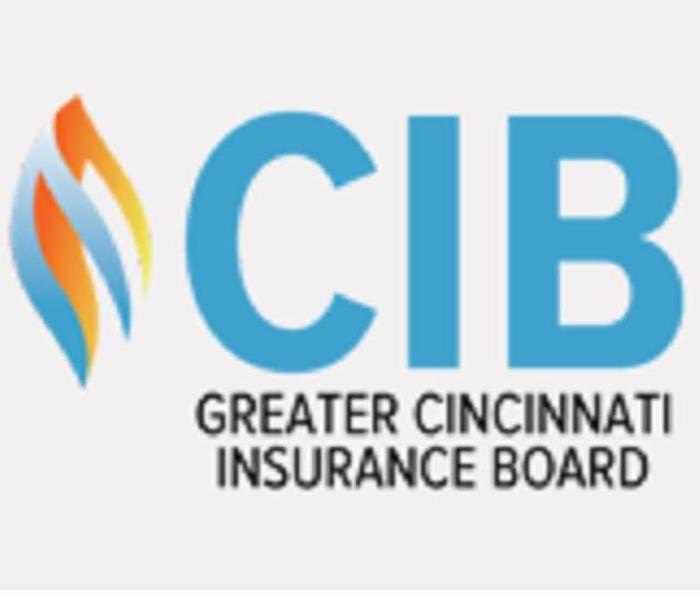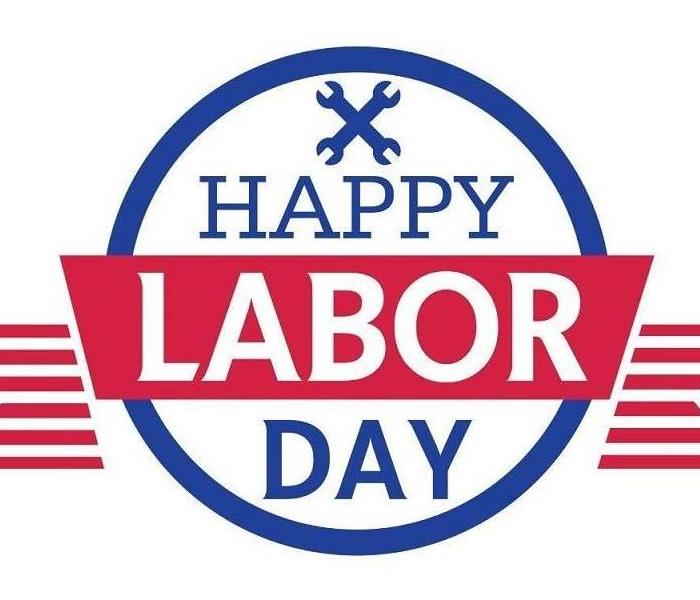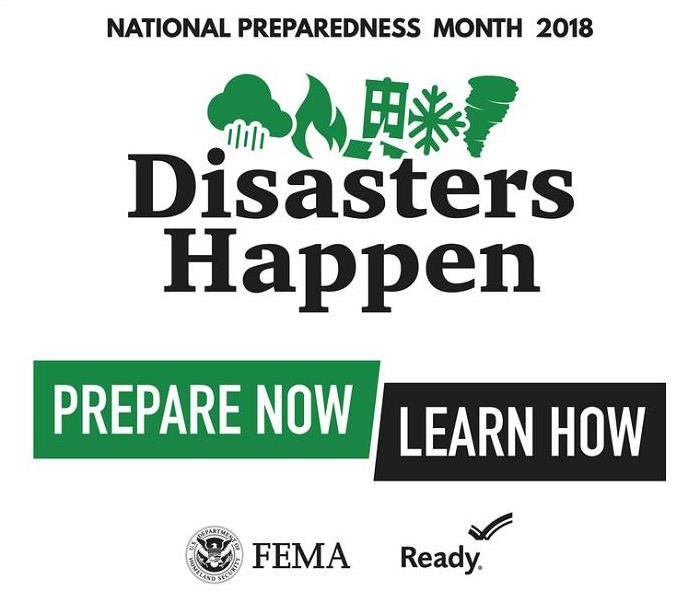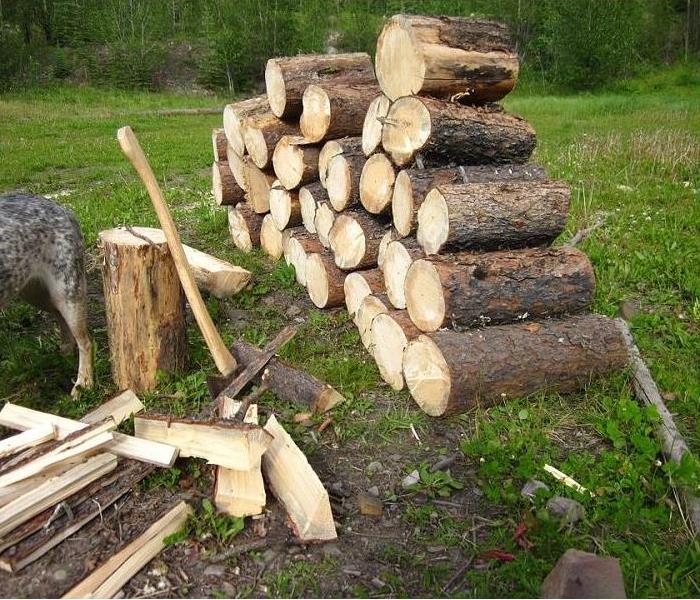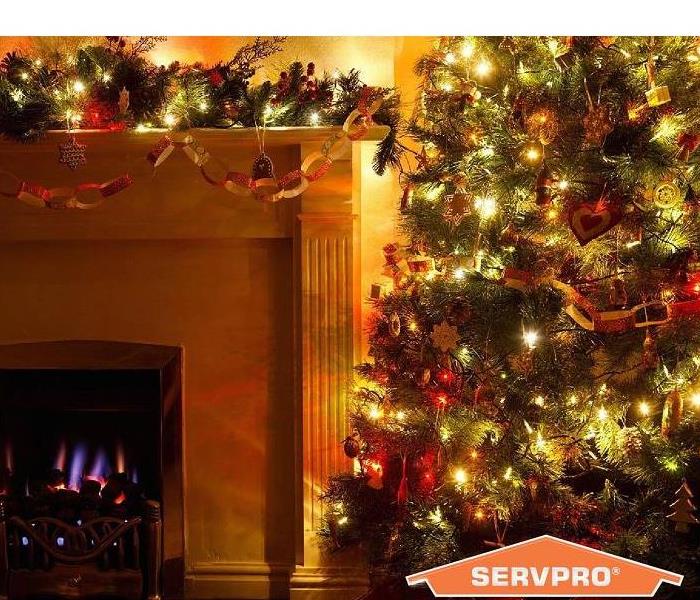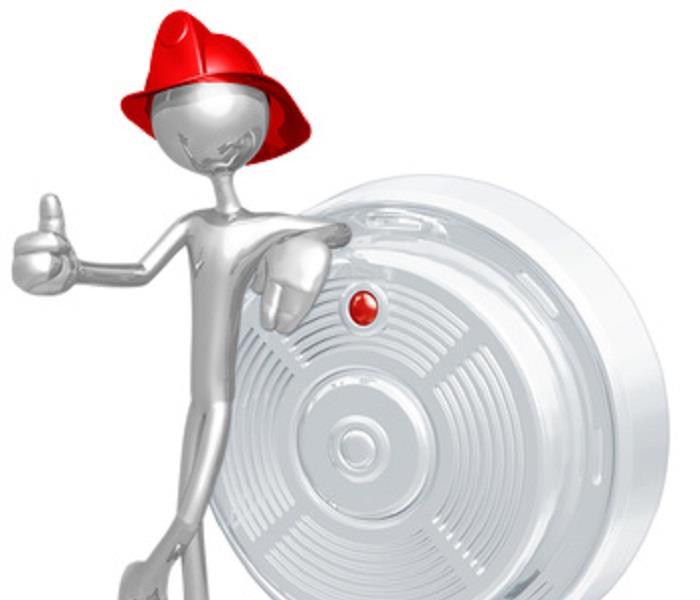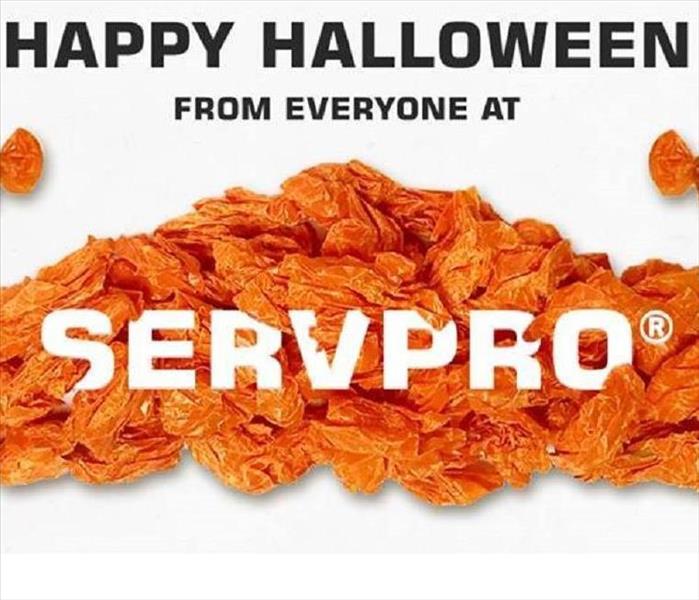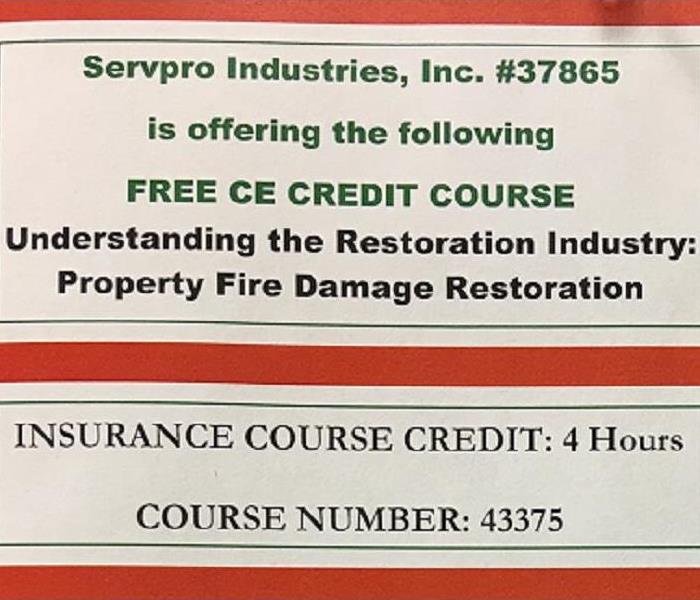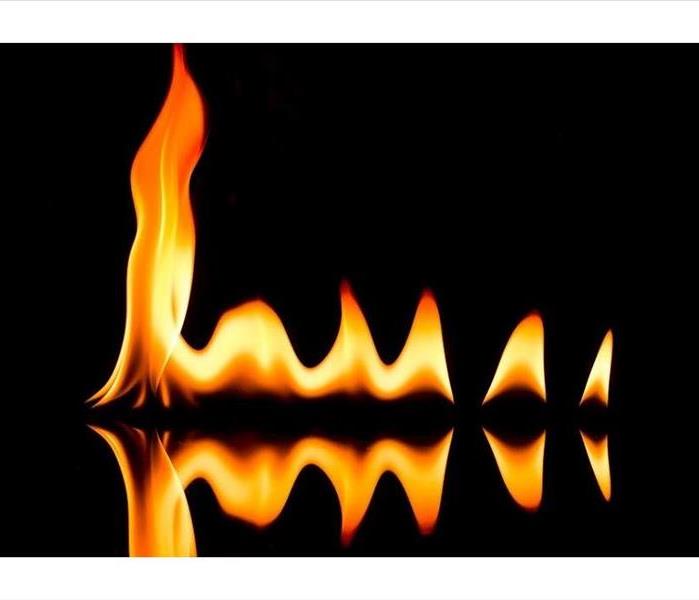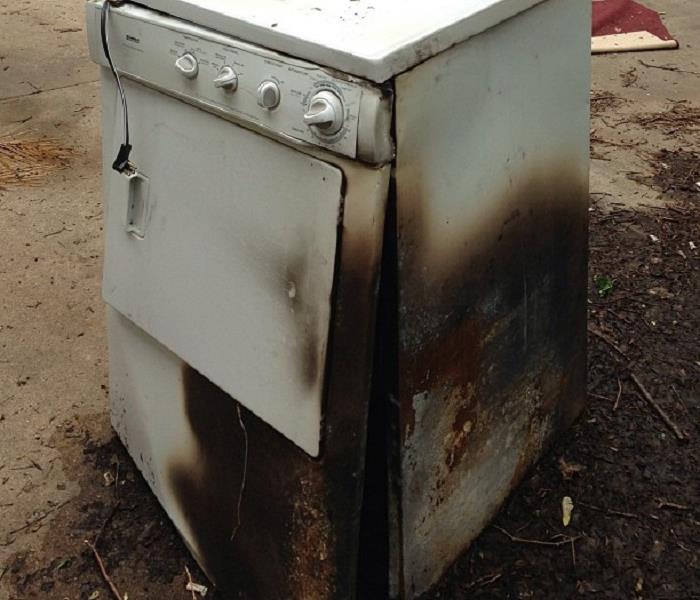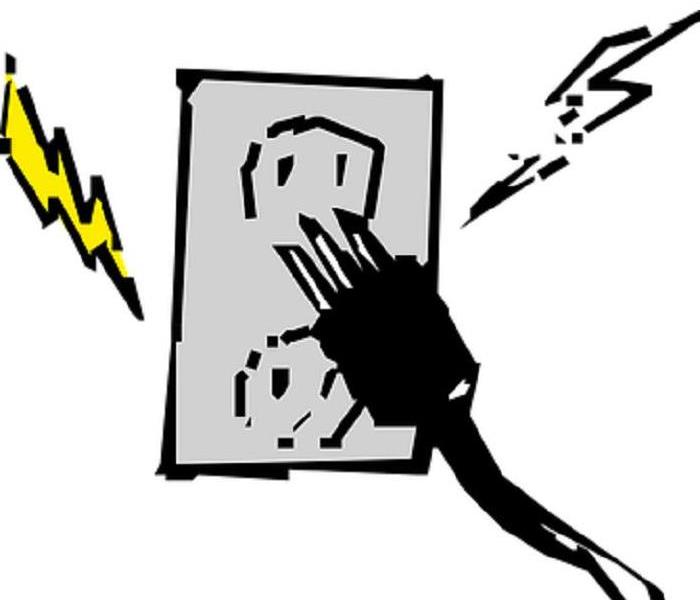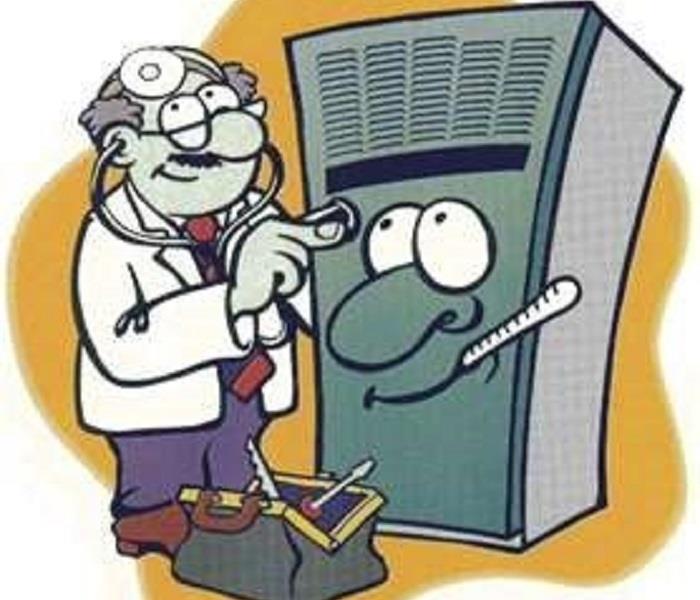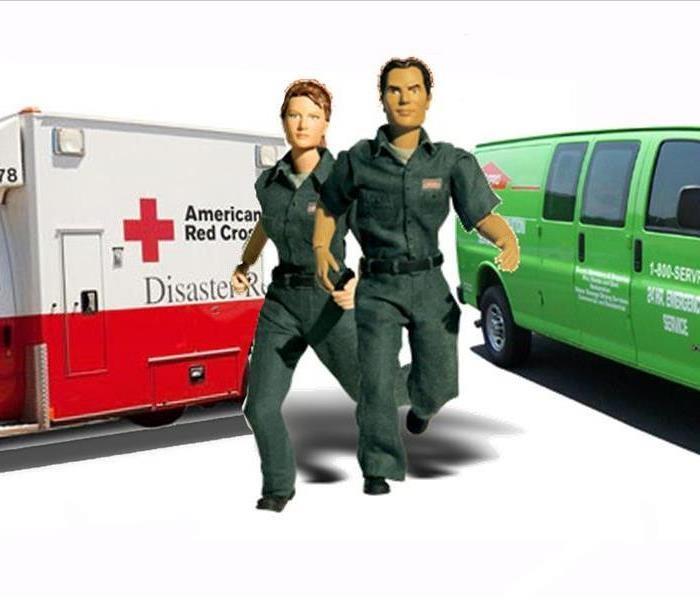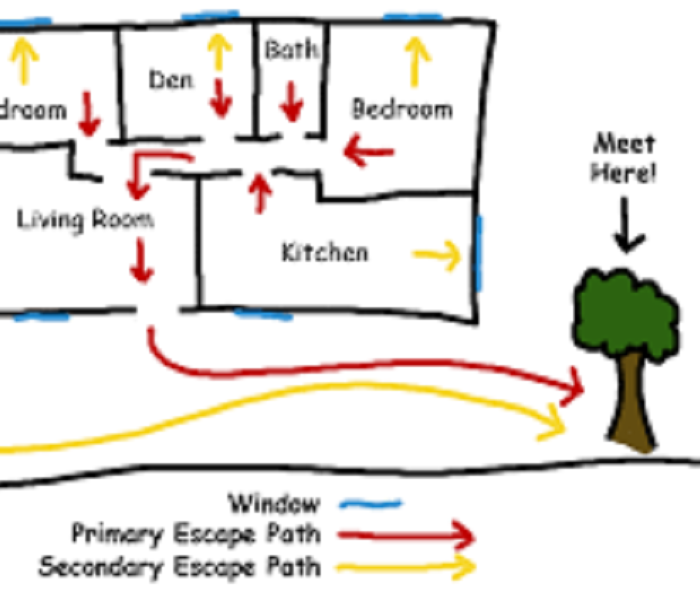Archived Fire Damage Blog Posts
When you need a fire extinguisher in your home
12/28/2023 (Permalink)
When you need to extinguish a fire in your home, it's important to have the right tool for the job. And if you're like most homeowners, you probably don't know much about fire extinguishers. So, how do you choose the best one for your needs? Let's look at what makes a good home fire extinguisher, how they work and how to use them properly so that you can be prepared in case of an emergency. Keep extinguishers where you'd need them. Once you've purchased your extinguisher, consider where you would use it. In general, any room with an open flame should have a fire extinguisher nearby. You'll also want to keep one in the garage for oil and gasoline fires and in your bedroom for candles or faulty wiring. When choosing where to place your fire extinguishers, consider how far away from the source of the flames they need to be located. Most recommendations suggest keeping them within 15 feet of wherever you think they may be needed. Your best bet is probably mounting them on walls near exits so that they're easily accessible when needed, but be aware that this will require more than just drilling into drywall. If this option is not feasible—or if you want something more permanent — you could install a fire sprinkler system instead: these systems are installed above head level and spray water directly onto burning materials when activated by heat detectors inside them or through manual activation by first responders who know where they are stored in advance. Choose the right type of extinguisher for your needs. The first step in selecting the right fire extinguisher for your home is to determine what type of fire you'll need to fight. The National Fire Protection Association (NFPA), which sets standards for how fire extinguishers are constructed, recommends that homeowners purchase and use three types of extinguishers: Class A, Class B and Class C. Class A: For fires involving paper, cloth, or wood. Class B: For fires involving flammable liquids such as gasoline, paint thinner and solvents. Class C: For electrical equipment such as wiring or appliances with exposed current-carrying parts like motors and transformers. Pick the right size extinguisher. If you're using a home fire extinguisher, be sure to check the size of the extinguisher. The size of a fire extinguisher depends on the size of the room and how much water it needs to put out a fire. But if your kitchen is large with lots of cabinets and flammable materials like paper towels or plastic utensils, then you'll need a different type of fire extinguisher — one that has larger gallons of water in it so that it can put out larger fires. It's important when choosing what kind of fire extinguishers at home stores should be aware which types are available in each store before making any purchases! How to use an extinguisher properly. It's important to get training from a professional before you use your extinguisher in an emergency. You can take a class to learn how to use an extinguisher properly, or hire someone who is certified as an instructor. The National Fire Protection Association (NFPA) offers courses on how to use different types of fire extinguishers, and many fire departments offer free classes at local community centers or schools. Once you've learned how to read the label and understand the color coding, it's important not only that you know how your particular model works but also how best to handle and operate it safely and efficiently in case there ever is an emergency situation at home where this knowledge could prove vital. Check the pressure gauge, tamper seal and safety pin regularly. You should check the pressure gauge, tamper seal and safety pin regularly to ensure that your home fire extinguisher is in good working order. The pressure gauge should be in green; if it's in red, you need to change the cylinder (the container inside) as soon as possible. The tamper seal should be intact; if it's broken or missing, the contents could have been tampered with by someone other than yourself. Finally, make sure that the safety pin hasn't been removed from your home fire extinguisher; if it has been removed and replaced with another pin, then there may be something wrong with your unit! Replace old or out-of-date fire extinguishers. Once you've purchased your fire extinguisher, it's important to remember that you should replace it every 5 years. Replace an extinguisher that has been dropped or damaged in any way. Replace an extinguisher that has been exposed to heat or cold. Replace an extinguisher that has been exposed to water, oil, grease, or other chemical agents. Fire damage is scary, but if you are prepared with the right tools and know how to use them, you can avoid a lot of problems. It can cause a lot of damage and ruin your home, leaving you with a headache to deal with after the fire has been put out. But if you’re prepared for it and know how to use the right tools, you can avoid a lot of problems. Fire damage happens when there is an uncontrolled fire in your home or place of business. This can happen from a variety of sources: Cooking on an electric stovetop (or any kind of stove) Electrical malfunctions Smoking cigarettes Incandescent light bulbs You may be wondering why these types of fires are so dangerous? Well, because they burn at extreme temperatures which makes them hard to extinguish and extremely destructive if not contained properly! If you are looking to improve the safety of your home and family, a fire extinguisher is a great first step. From properly selecting an extinguisher for your needs to knowing how it works, there is much more information available than ever before. If you have any questions about what kind of home fire extinguisher will work best for your situation, contact us today!
What to do if your roof is damaged in a fire
12/28/2023 (Permalink)
What Do I Do If a Fire Damages My Roof?
A fire can cause major damage to your roof, and it's important to know what steps to take if you have experienced this kind of damage. Here are some tips.
The roof is one of the most exposed areas of your business to the elements.
It can be damaged by fire, wind and rain, snow and ice, hail, or even fallen trees after a storm.
It’s important to note that a fire-damaged roof may need repairs if it was not destroyed in the fire. Even if all that remains is charred wood or cinders from smoke damage on top of your existing roofing material (such as asphalt shingles), you may still need repairs.
A fire can cause major damage to your roof.
If your business is affected by fire, the roof is one of the most exposed areas to damage. Roofs are also built to resist a lot of weather conditions and extreme temperatures, so they can withstand a good amount of abuse before they start showing signs of wear or tear. However, fire will cause heavy damage on any type of material including steel and concrete.
The most obvious sign that your roof has been damaged by a fire is holes in it, but there are other things you need to look out for as well:
- If there's smoke damage on the outside walls or vents
- Fire residue (charcoal dust) in the ceiling
- Water or moisture stains on ceilings and walls
You should make sure you have enough tarps for the size of the roof.
To protect your roof, you should use tarps. Tarps are the best option for covering a damaged or destroyed roof after a fire. They are economical and easy to install and can be used for all sizes of roofs.
To install a tarp, you need to first measure the length and width of your roof by holding one end of your measuring tape at one corner of your house, then measuring from wall-to-wall in another direction until you reach another corner. Then add an extra foot or two onto each measurement so that when you buy tarps, they will fit snugly over all four sides of your house without any gaps between them and/or leaves a few inches overhang on each side (which helps prevent rainwater from getting into areas where there might still be standing water).
If you have experienced fire damage, call in a professional who can help you figure out what to do about your roof.
If you have experienced fire damage, call in a professional who can help you figure out what to do about your roof.
Here are some tips for using tarps:
- Make sure to have enough tarps for the size of your roof.
- Use them to keep out rain and snow.
- Use them to keep out birds, animals, and insects as well as rain and snow.
If you have experienced fire damage, call in a professional who can help you figure out what to do about your roof. Roofing companies can fix the damage and make sure that your business is safe from fire harm. They will also inspect your property for any other problems that could lead to another fire or injury at another time in the future.
How To Prevent a Natural Gas Fire
9/2/2022 (Permalink)
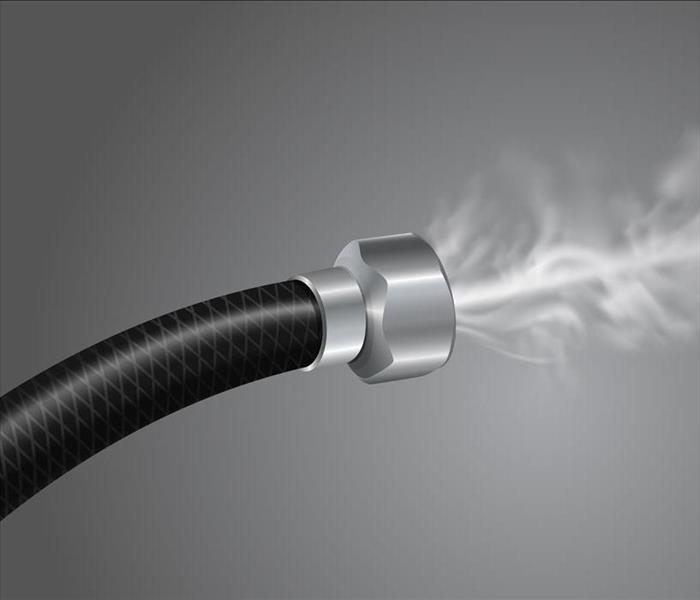 Gas leaks can be identified by several recognizable signs.
Gas leaks can be identified by several recognizable signs.
How To Detect a Gas Leak
Natural gas is used to efficiently power appliances and heat many homes, but an unattended leak can lead to a gas fire. To protect your Florence, KY, home, learn how to detect a gas leak and what to do in the case of an emergency.
Noticing a Gas Leak
Gas leaks can be identified by several recognizable signs. Take caution if you detect:
- The smell of rotten eggs
- Hissing sounds coming from an appliance or pipe
- An unexplained spike in your gas bill
- Physical symptoms, such as fatigue, nausea or a headache
- Dead indoor or outdoor plants that were previously healthy
- Air bubbles in standing water or mud outside of your home
Preventing a Gas Fire
If you believe you have a gas leak in your home, check your appliances that are powered by gas to see if a stovetop or pipe is leaking. Know where your gas meter is located and how to turn it off safely if you think you have a leak. Immediately open windows and doors to ventilate your home. Do not turn on any lights or ignite any open flames, as they could spark a fire.
Calling Professionals
Contact emergency services and your gas provider to report the leak. Evacuate your home, bringing with you any pets, and distance yourself. You can wait across the street or in your vehicle parked away from the house. Wait for first responders and a representative from your gas company to arrive and deem the property safe before returning inside. In the event of a fire, call a professional restoration company to help with the rebuilding process.
Keep your home safe from a gas explosion by knowing what to do in the event of a leak. By taking the proper precautions, you can prevent a gas fire and ensure you are out of harm's way.
4 Steps To Effectively Use a Fire Extinguisher
8/2/2022 (Permalink)
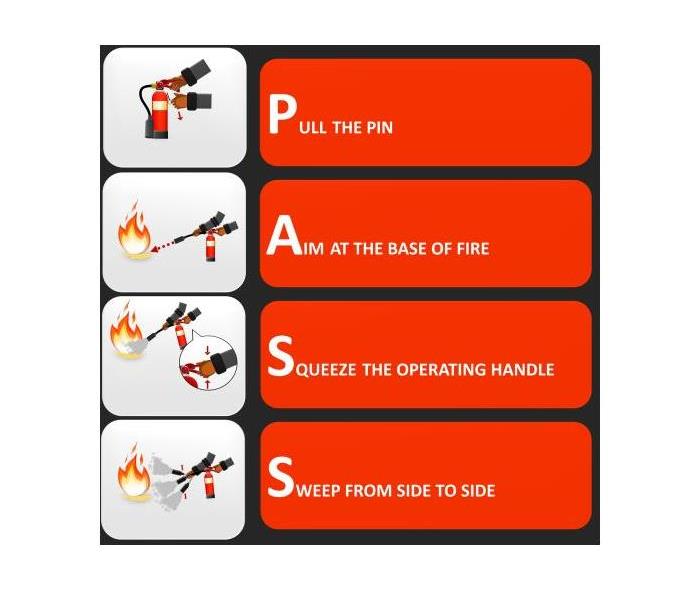 Follow these steps for using a fire extinguisher
Follow these steps for using a fire extinguisher
How to Use a Fire Extinguisher
Handling a kitchen fire in Burlington, KY can be a challenge, but it's nothing you can't handle with a little training. Stay calm and follow these steps for using a fire extinguisher as directed by the U.S. Occupational Safety and Health Administration.
1. Pull the Pin
Pull the pin from the extinguisher immediately before use. Do not remove the pin in advance of any fires or you risk accidentally spraying the contents should you knock the canister over or move it for any reason. Pulling the pin will also break the tamper seal.
2. Aim the Fire Extinguisher
Aim the nozzle or hose at the point where the flames originate (at the base of the fire). Do not aim at the middle or top of the flames, as this will not properly extinguish the fire. Be careful not to touch the discharge nozzle or hose as the carbon dioxide is extremely cold and can damage your skin.
3. Squeeze the Handle
Squeeze the handle firmly to release the fire-stopping chemicals from the canister. Maintain firm, even pressure, and do not pump the handle in bursts like a gun trigger. Remember to keep your skin away from the cold chemicals being released.
4. Sweep the Area
Sweep the nozzle from side to side, maintaining aim at the base of the fire. Continue to spray in this manner until the fire appears to be out. At that point, release the handle and observe the area. If the fire re-ignites or if smoke increases in volume, repeat steps two through four.
If the fire continues to grow even as you attempt to extinguish it (and especially if it begins to intensify after the fire extinguisher has been emptied), vacate the property immediately and call the fire department for assistance. Once the smoke clears, you can begin a claim with your insurer and start working with a fire restoration company.
Stay calm and follow these steps to extinguish the fire quickly and minimize fire damage.
What Items Should You Throw Away After a Fire?
7/23/2022 (Permalink)
 The high heat that accompanies a fire could affect your medications.
The high heat that accompanies a fire could affect your medications.
Throw Away These Belongings After a Fire
The large flames and billowing smoke that accompany a fire can be quite destructive. Fire damage restoration professionals in Hebron, KY, can salvage many items in your house. However, they will not be able to save everything. Certain items will have to be discarded for your safety.
1. Burned Clothes
Remediation experts can disinfect and clean beddings and clothes following a fire. However, charred textiles should be tossed in the trash. The chemicals in the soot and smoke could irritate your skin the next time you try to wear those clothes. You could also inadvertently inhale those chemicals.
2. Medicines
The high heat that accompanies a fire could affect your medications. Their potencies could be altered, which could harm you if you ingest the medicines. Soot, smoke and fire-dousing chemicals may damage medicines, as well. You should thus throw away those pill bottles and ask your doctor for refills.
3. Cosmetics
Excessive heat and fire suppressants could also alter the minerals and chemicals inside toiletries and cosmetics. It may be tempting to clean and keep these items, especially since they can be expensive. However, fire-damaged makeup or shampoo could harm your hair and skin.
4. Food
Food can easily get contaminated by chemicals from fire extinguishers. Heat from a blaze could also activate harmful bacteria lingering in jars and cans. Any foods that have fire extinguisher dust should be thrown out, as should any cans that are rusted or bulging.
Any perishable items left in a freezer or refrigerator that lost power should also be tossed. If you can afford to do so, you should consider replacing all food affected by the blaze.
To keep yourself and your family safe, you should throw away burned clothes after a fire. You should also discard any cosmetics, medicines and foods that were damaged by the flames and smoke. However, many of your other belongings can be restored with the help of remediation professionals.
What Is the Extent of Renters Insurance Coverage?
4/25/2022 (Permalink)
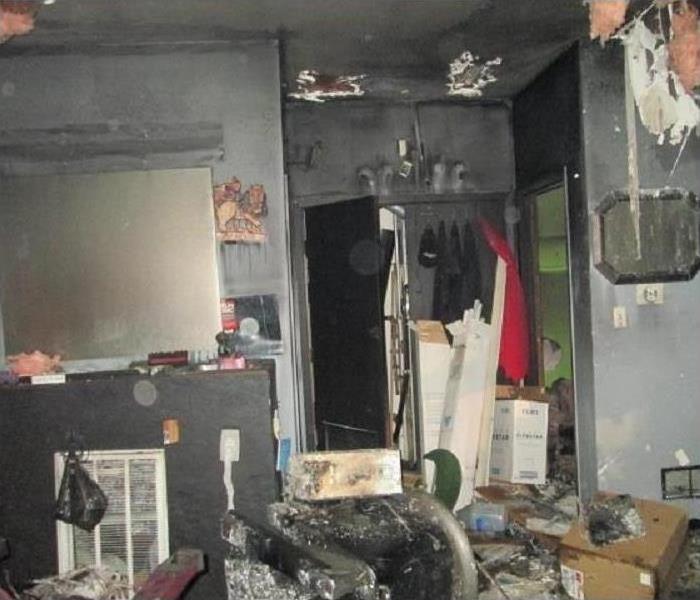 Fire damage in an apartment in Crescent Springs, KY.
Fire damage in an apartment in Crescent Springs, KY.
What Is the Coverage Amount of Renters Insurance?
Property owners often recommend renters insurance to tenants. These policies can be useful for covering the cost of damaged or ruined contents at a rental property in Crescent Springs, KY. It is important to check the details of any renters policy to determine the full extent of coverage in each of the following areas.
Damaged Contents
Most renters policies cover the cost of restoring damaged contents. This coverage can pay off when items can be treated by content cleaning professionals during fire restoration. Any of the following methods may be used:
- Dry cleaning
- Immersion
- Wet cleaning
Renters policies will cover costs associated with content restoration up to a set limit. Additional costs associated with cleaning or temporarily storing cleaned items may require that a renter pay out of pocket.
Replacement Costs
Some renter's insurance policies cover replacement costs. It is important to check to make sure this is the case, as some policies only cover the market value. Regardless of the purchase cost of any item, its value depreciates over time. Replacement cost coverage will pay the total cost for replacing a ruined item, but market value coverage may come up short.
Temporary Relocation
The best renters policies allocate a specified amount of coverage for temporary relocation. If fire damage restoration at a property will require evacuation, this coverage can offset some of the cost of securing lodging off-site for days or weeks until cleanup is complete. Be sure to check the policy limit and any requirements for this benefit.
If a renters insurance policy only covers the market value and not the replacement cost of contents or does not extend to relocation costs, it may be worthwhile to switch to a policy that provides more complete coverage. All of these areas of coverage can be helpful in the event that a fire damages an apartment or rental home located in Crescent Springs, KY.
Keep Your Building Secure After a Fire
4/5/2022 (Permalink)
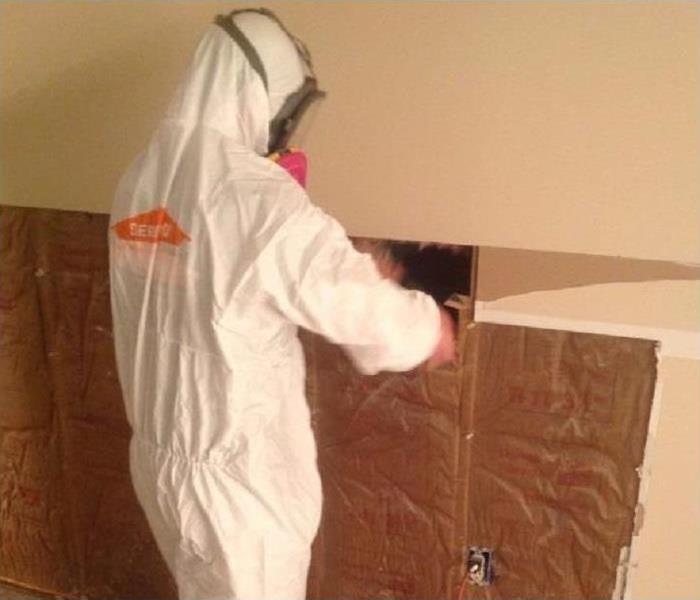 It’s a smart decision to call in a professional fire cleanup team located in Petersburg, KY.
It’s a smart decision to call in a professional fire cleanup team located in Petersburg, KY.
If a fire strikes your place of business in Petersburg, KY, you will have a lot to manage all at once. Your biggest concern will likely be about how much fire damage your building and its contents have sustained. You may wonder how quickly your business can be up and running again, how much will your insurance cover, and how to repair any damaged property and electronics. Since bad things have a way of escalating, it’s important to make sure after a fire that your premises are safe and secure from vandals and other troublemakers.
Security Tips After a Fire
As hard as it is to believe, a fire can often leave a company susceptible to looting. This certainly happened in the recent California wildfires, where looters came into the area to steal items from the damaged houses. Fortunately, there are a few things to do to limit your chances of being robbed after a fire. The following steps could prove helpful:
- Secure the property as soon as possible by boarding up openings
- Keep a security presence if possible
- Contact local authorities to perform regular checkups on the building
- Put up signs to keep out criminals
- Install an alarm system
Fire damage is bad enough. The prospect of being robbed afterward is something that can be prevented with a little forethought.
Fire Cleanup Tips
Cleaning up after a fire can be a complicated process, as there may be soot, water, smoke and electrical damage to contend with. It’s a smart decision to call in a professional fire cleanup team located in Petersburg, KY. Having the right equipment on hand, as well as the necessary knowledge in place, can speed up the process. It’s also a great way to make sure all the damage has been cleaned up.
Fire damage to your business need not be worsened by vandals. Secure your building after a fire to protect your assets.
Educating Employees on Workplace Burns
3/22/2022 (Permalink)
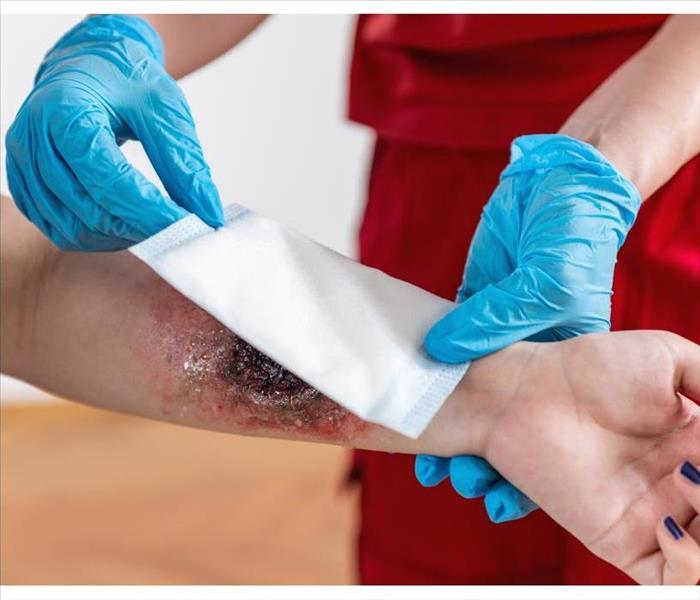 A minor burn can generally be taken care of at the workplace with a first aid kit
A minor burn can generally be taken care of at the workplace with a first aid kit
Educating Employees on Workplace Burns
The risk of fire damage to the business you have worked so tirelessly to build is troubling, but the threat of injury to employees is unacceptable. That’s why it’s imperative that they get basic first aid training. Workplace burns can range from very minor to critical. Providing emergency care training (e.g., dressing a burn) for all employees will empower them with the knowledge and self-assurance they will need in an emergency.
Well-Stocked First Aid Kit
A well-supplied first aid kit is the first step to preparing for any accident that might occur in the workplace. It’s a good idea to place the kit in a conspicuous, easily accessible location that all employees are aware of. You will want to make sure to include burn first aid supplies in this kit and educate your employees on methods of treating burns with the following supplies:
Burn gels or lotions such as aloe vera for cooling pain relief and to prevent drying
Gauze or sterile cotton cloth to cover injury and protect from outside irritants or bacteria
Gauze tape to hold the gauze pads or cloth loosely onto the wound
Cool, moist compress for pain relief before wrapping
Pain-relieving medication such as acetaminophen, naproxen or ibuprofen
This is not one of those things that a business owner should defer until later. The fire damage that you address proactively today may mean less worry tomorrow. You might want to invite an Emergency Medical Technician to teach you and your employees more advanced burn first aid. A minor burn can generally be taken care of at the workplace with a first aid kit that is sufficiently supplied. A major burn will require emergency services, but the sterile gauze or cloth from your kit can protect the burn until help arrives. Be sure to restock your kit after the accident.
In the event of a fire at your business in Oakbrook, KY, it is nice to know that there is a fire restoration company that can ease your mind and resolve the fire damage so that you can concentrate more on the well-being of your injured employee.
Are You the Hero We're Looking For?
8/27/2021 (Permalink)
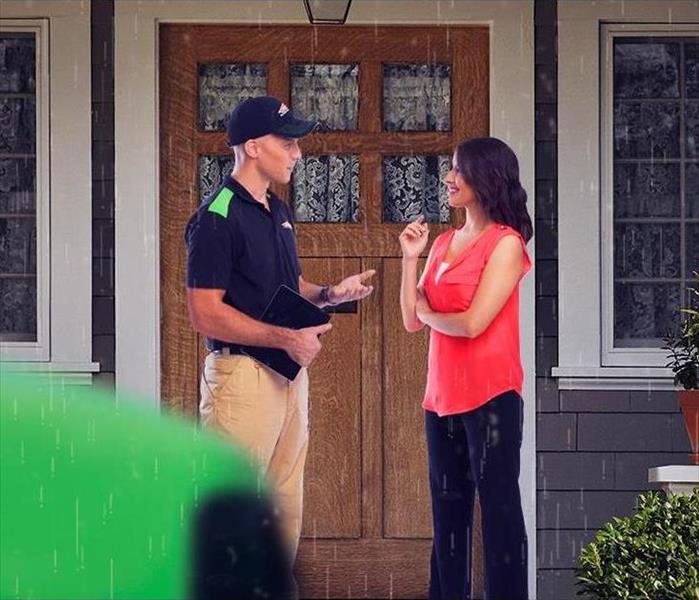 Are you looking for a rewarding career where you can make a difference in the world? Then look no further!
Are you looking for a rewarding career where you can make a difference in the world? Then look no further!
Are you passionate about helping people during rough times? Then you've come to the right place! We're looking for individuals that have a sincere drive toward the goal of helping make fire and water damage "Like it never even happened." Our Franchise is looking for someone comfortable working hard in difficult situations, enjoys meeting new people, has strong communication skills, and can multitask effectively.
Primary Role:
- Manage production crews and jobs according to SERVPRO procedures.
- Assign and coordinate jobs with crews.
- Keep General Manager/Owner updated on production.
- Supervise job scheduling, coordinate requirements for the job, complete job files, supervise production, and monitor jobs from start to finish.
- Resolve problems quickly as they arise.
- Perform production work as needed.
- Provide and communicate clear and accurate pretesting, scoping of services, and job estimates.
- Monitor and follow-up on all assigned jobs ensuring that customer needs are met.
- Communicate and establish rapport with commercial, insurance, and residential customers.
Results Expected:
- Crews are effectively managed to maximize production.
- Production processes are performed according to guidelines.
- Documentation is completed in a timely and accurate manner.
- Production costs are maintained at the established rate.
- Additional sales are made to customers.
- Both internal and external communications are timely and effective.
- Jobs have completed either meeting or exceeding customer expectations.
- Experience with Xactimate is a plus.
We are an Equal Opportunity Employer. This company does not discriminate in employment and personnel practices based on race, color, religion, sex, disability, age, national origin, veteran status, or any other characteristic protected by law.
If you'd like to join our SERVPRO family, please email your resume to jmckinney@hartkes.com. Don't miss out on this fantastic opportunity! The deadline is 10/1/21.
3 Interesting Facts About Soot
6/3/2021 (Permalink)
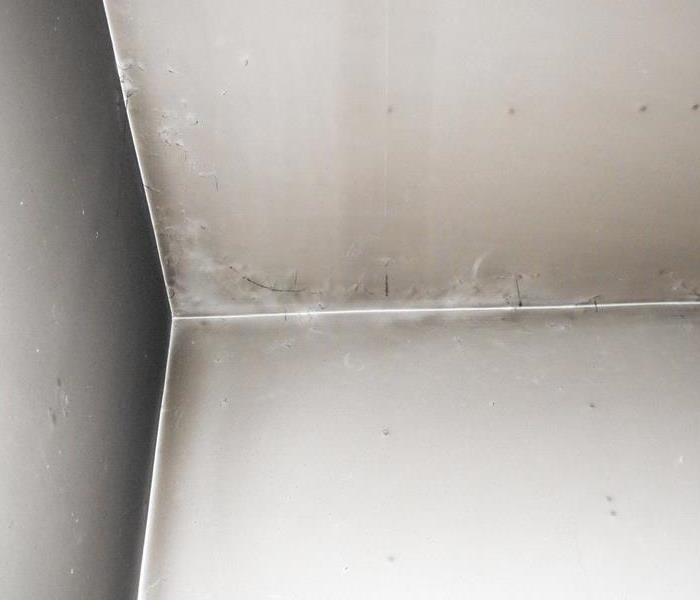 This soot is in a garage we cleaned in Loveland Ohio. The fire damage affected the Homeowner's contents, ceilings, and walls.
This soot is in a garage we cleaned in Loveland Ohio. The fire damage affected the Homeowner's contents, ceilings, and walls.
After a fire, there is a toxic residue that clings to your ceilings, walls, and contents. This residue is called soot. It comes in many shapes and forms. Publichealth.lacounty.gov explains that “high-oxygen fires will result in dry dusty soot, whereas slow-burning, low-oxygen fires will result in greasy wet deposits that easily smear.” You might consider cleaning this substance yourself. SERVPRO is here to explain why that isn't a good idea.
What Is Soot Made Of?
Soot is a blanket of tiny particulates. These particulates are made of tiny molecules from the contents and materials that burned up in the fire. Sciencedirect.com further explains “all soots are... characterized by the presence of very small particles (submicrometer) and correspondingly a large ratio of surface area to mass.” After a fire, these small particles are actively searching for a place to land. The walls and ceiling have the perfect surface to attract them.
Why Is Soot Toxic
The toxicity of soot comes from the chemical makeup of the molecules we just discussed. In a house fire, the burnt contents are typically made up of synthetic materials such as plastic, metals, and wood. Usually, when they are in one solid piece, these materials are safe. However, when broken down to the molecular level, these materials can become carcinogenic. If your home was built before 1978, lead and asbestos are likely present. According to The National Cancer Institute, other carcinogenic substances in soot include but are not limited to arsenic, cadmium, and chromium.
Soot Takes Many Forms
After a fire, you may notice black cobwebs in the affected area. This is not a reflection of how clean your house was before the fire. This is a chemical reaction from the fire. The high temperature of the fire allows the molecules to stick together. Unlike water that evaporates, these molecules are not able to turn back into their gaseous forms. This creates a chainlike structure that many people confuse as cobwebs. Their actual name is a Soot Web or Soot Tag. They can get very messy if they are disturbed.
Because of the nature of a soot web, do not attempt to clean them yourself. Doing so can cause more fire damage than you would have otherwise incurred. Cleaning up soot after fire damage yourself is not recommended. Our professionally trained staff have the experience and equipment to ensure that the job gets done safely and correctly. For your family’s health and safety, please give our office a call. Our staff is ready to take your call any time of day.
The Dangers of Gardening
5/28/2021 (Permalink)
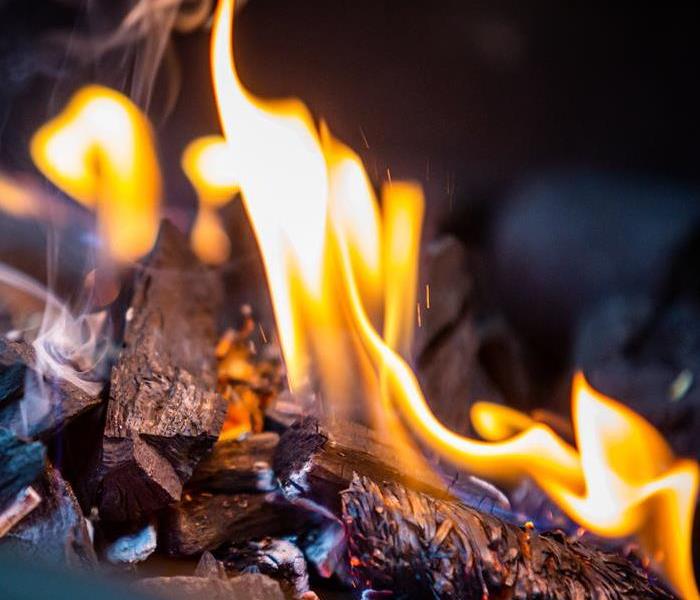 Prevent fire damage by following these 5 steps.
Prevent fire damage by following these 5 steps.
If you are an avid gardener, you know how beneficial mulch can be to your plants. It suppresses weeds, aids in preventing erosion, spontaneously combusts, holds in moisture, and adds nutrients to the soil. Wait, did that say spontaneously combusts? It sure did! Lucky for you, there are ways to prevent this from happening. We have compiled a list of 5 simple steps that you can take to prevent garden fires.
Don’t Pile it High
Many homeowners and groundskeepers enjoy the aesthetics of a thick layer of mulch. However, that is where the danger lies. NBCWashington.com interviewed Chief Fire Marshell Linda Hale she explained, “Spontaneous combustion can happen when a decomposing, organic material such as mulch generates enough heat to ignite without an outside source." Because of the heat produced from decomposing mulch, it is recommended that you don’t go over 3 inches. This will reduce the risk of combustion and give less fuel to the fire if it does spontaneously combust.
Include Inorganic Mulch in Your Garden bed
Cincinnati Insurance Company defines the difference between organic and inorganic mulches.
Most organic mulches come from plant materials such as pine needles, wheat straw, pine bark nuggets, shredded cedar and redwood bark, or wood chips from recycled pallets. Ground and shredded rubber are also considered organic mulches. Inorganic mulches, usually derived from non-plant materials, include rock, gravel, or brick chips.
Inorganic mulch might not give the nutrients to the soil like organic mulch but, it can help in many of the same ways organic materials can.
Keep Space Between Your Building and Mulch
Because of its combustible properties, it is not recommended to mulch right up against your structure. Some states legally require 5 feet distance between your building and mulch. To fill up this space use inorganic mulch like rock or gravel. Residential properties are not legally obligated to uphold this but, it is highly recommended for the homeowner’s safety.
Keep the Mulch Damp
Spontaneous combustion can happen any time of the year. It’s more likely in the middle of summer when the air is dry because it hasn’t rained and winds are high. Paying attention to these weather patterns and keeping the mulch moist can prevent fire damage. Statistically, mulch fires happen during the afternoon when the day is the hottest. Consider watering in the morning. This helps prevent evaporation and keeps the ground cooler in the afternoon.
Keep Mulch Away From Open Flames
In the past, we’ve discussed safety precautions with open flames. Ideally, your grills and campfires are a minimum of 20 feet away from any structure. Keep this distance with mulch too. The dangers are the same. Embers can pop out of the fire and cause damage, or; the fire can get out of control for a myriad of other reasons.
If you are a business owner, make sure that you have a cigarette receptacle. This will discourage people from just throwing cigarette butts into the mulched area. This is good advice to heed if you are a smoker and a property owner yourself. Never throw a lit cigarette onto these wood or rubber chips.
Fire damage from spontaneous combustion and human error could happen at any moment. We have seen it and helped our fair share of clients through it. Should this unfortunate phenomenon happen to you do not hesitate to call our offices at (513) 693-2541.
Stop, Drop, and Read, Before You Fire Up Your RV
4/14/2021 (Permalink)
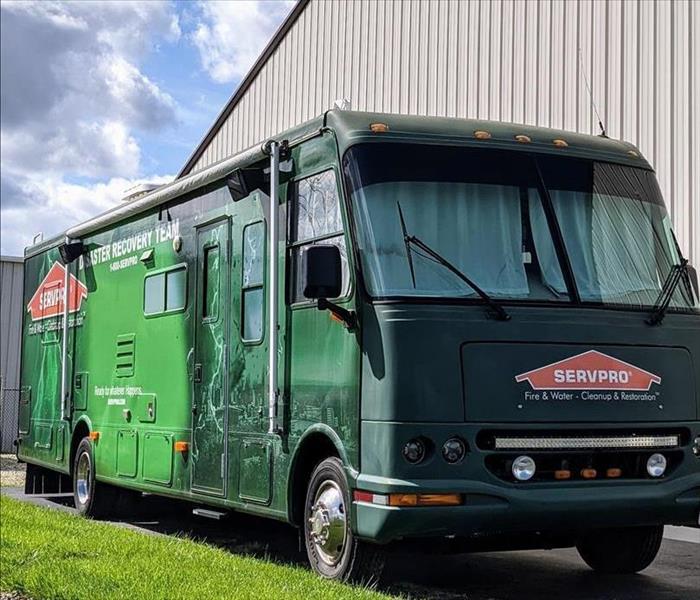 SERVPRO uses an RV as an office on wheels when we assist other franchises with large storms.
SERVPRO uses an RV as an office on wheels when we assist other franchises with large storms.
The weather is warming up, and; you know what that means, it’s time to start camping again! Is your Recreational Vehicle ready? According to the National Park Service, 20,000 RV fires occur nationally each year. Before you hitch up those RVs, pack up those tents, and head for the trees, make sure you’re prepared for fire safety.
Before You Hit the Road
Make a checklist before you leave to make sure that you are ready for any emergency. You can use our list or; make your own.
- Make sure the smoke detector is working.
- Make sure you have a Fire Extinguisher that puts out class A, B,& C fires. You can have it inspected to ensure it’s in working order.
- Examine your appliances that use propane for leaks.
- Refridgerator
- Furnace
- Stovetop
- Oven
- Check that your propane leak detector is working.
- Know your emergency exits.
- Make sure your emergency exits are clear.
- Make sure your emergency exits are not stuck.
- Make sure your family has and knows the emergency plan.
- Inspect your power cords for wear and tear. Replace any power cords that are damaged or old.
- Identify any attachments or chains that could drag to the ground while you are driving. The sparks could ignite and start a fire or an explosion if it reaches the propane.
- Unrelated to fire but just as important:
- Make sure your Carbon monoxide detector is in working order.
- Have an emergency communication device on hand.
Relax but Stay Safe
On warm sunny days, it’s tempting to lounge outside while your meal slowly simmers on the stove inside. Statistically, most fires that happen in an RV start in the kitchen. Stay inside and keep an eye on the cooking meal. Clear the stove of anything that could catch fire.
When your cooking with a gas stove, sometimes a pot will boil over and put out the flame. Even though the flame on the stove is out, gas will continue to flow. This makes the air combustible. Before attempting to relight the pilot light turn off the stove. Then, open all of the doors and windows to air out the RV. After you’ve given it a few minutes, it should be safe to ignite the pilot light again.
Keep your campfire at least 25 feet away from any and all structures. This includes your RV, tents, and additional vehicles you may have on your campsite. Before turning in for the night, make sure the fire is completely out. Even if it’s just embers, a fire that remains lit has the potential to turn into a wildfire.
In Case of An Emergency
In case of emergency, the first thing you should do is get out. The RV and the contents inside can be replaced life, cannot. Do not go back inside for any item. The only time you should attempt to put out the fire yourself is if you know you can do so without endangering yourself.
When your out in the woods, cellphone service can be spotty or non-existent. Plan ahead for this. Make sure that you have some form of emergency communication so you can contact the fire department or a park ranger. Here are some options that you can add to your packing list.
- HAM radio
- CB radios
- Satellite phone
You can also check out the apps listed below. They can be used when there is no cell service available.
If a fire does break out, SERVPRO can help you handle the aftermath. Our professionals are trained to clean smoke and soot out of any structure, including your RV. We can also clean your contents that were affected by the fire.
We hope this checklist keeps you safe in case of an emergency. Most of all, we hope that you have a fun and relaxing time with your family and friends during this camping season.
Practice Fire Safety This Spring
3/22/2021 (Permalink)
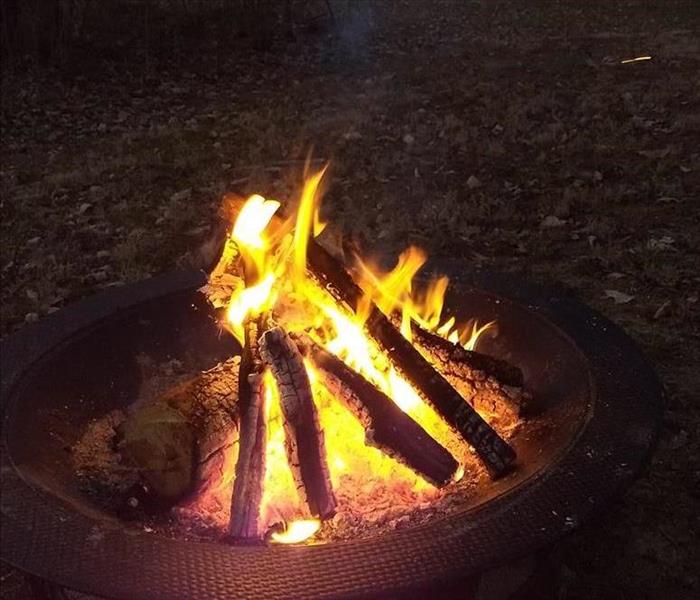 Prevent property damage by keeping open fires a minimum of 25 feet away from all structures.
Prevent property damage by keeping open fires a minimum of 25 feet away from all structures.
Winter and the pandemic have forced us indoors for the last few months. Now that the weather is getting warmer many of us are itching to get outside and spend time some much-needed time with friends. Campfires offer us a way to stay outside longer and social distance safely while we’re still battling Covid 19. However, there are some safety measures and state/city laws you should be aware of before gathering around the fire.
EPA Regulations
If you’re getting together for outdoor festivities it’s best to familiarize yourself with the kind of equipment approved by the EPA.
- deck and patio fireplaces
- chimineys
- patio hearths
- fire tables
- fire pits/kettles
- or similar devices
The safest place for any outdoor fire is a minimum of 25 feet away from the house or any other structures. It’s a good idea to practice this for your charcoal and propane grill as well.
Ohio and Kentucky state laws are pretty similar when it comes to having a small campfire in your backyard. The fire should be kept small. No more than three feet wide and two feet high according to Ohio and three feet wide and three high in Kentucky. Keep in mind that these regulations can change by county and city so be sure to check with your local fire department if you have any concerns about regulations or permits. The EPA also requires that your fire is fueled only by seasoned firewood, natural gas, or other clean-burning fuel. Burning trash is not permitted so keep those styrofoam plates out of there no matter how tempting it may be to watch them melt.
Safety Tips
There are many steps to take to help prevent your small fire from getting out of control. Of these, the two most important are keeping a water source next to you and making sure that your fire is out completely when you’re done. Unattended fires, even if they’re just glowing embers, are one of the main causes of property damage and human injury. Firesideoutdoor.com states “greater than 80% of campfire related pediatric injuries were caused by day old campfires.” Before you go inside pour water over the fire or hose it down well to keep your friends, family, and property safe.
Basic safety tips include, but are not limited to the following:
- Make sure any and all low hanging branches are clear and removed from the area.
- Clear any dead leaves and dry twigs away from the area.
- Keep your pets and children a safe distance from the fire.
- Supervise any child roasting a marshmallow.
- Don’t wear loose-fitting clothes.
- Don’t shake or throw a burning marshmallow.
- If using a metal skewer handle with care as they can cause severe burns.
- Don’t use combustible liquids such as gasoline on the fire.
Following state laws and these suggested safety tips should keep you safe and cozy around the fire this spring, summer, and fall. In the unfortunate event that your fire gets out of hand even with safety measures in place, SERVPRO is here to help you handle the aftermath. You can count on us to help you through the process.
Important Things to Know about Fire Extinguishers
3/17/2021 (Permalink)
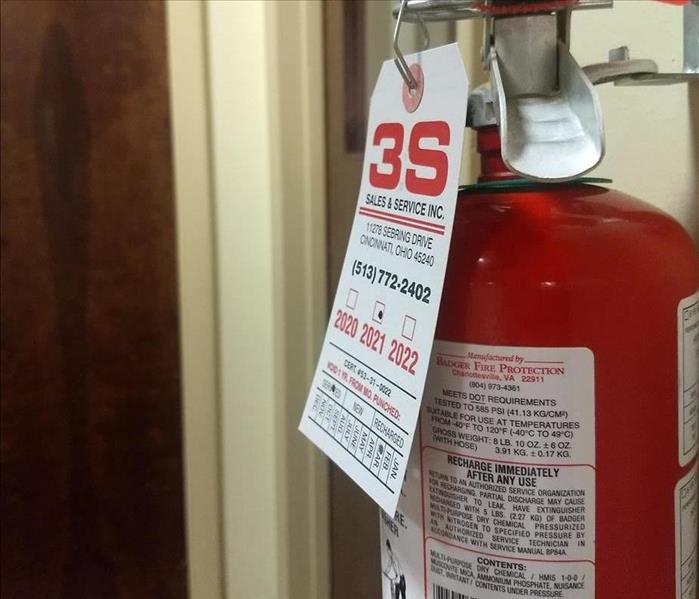 Contents label of our office's fire extinguisher.
Contents label of our office's fire extinguisher.
Fire extinguishers are household items that everyone hopes they never have to use. Like most home and business owners, you probably bought it to protect your house from fire and put it out of your mind. In the unfortunate event that you do have to use it, it’s important to have some basic information about it. Continue reading for the types of fire extinguishers there are, where to find that information on the extinguisher you own, what types of fires they’re used for, and some basic cleaning/ safety instructions.
Types of Fire Extinguishers
There are 9 basic types of fire extinguishers. These different chemical compounds are used for the different types of fires homes and businesses can have.
Monoammonium Phosphate, Potassium Bicarbonate, & Sodium
These are the most common types of fire extinguishers that you will find. They work on Class AB&C fires. The University of Massachusetts Boston explains these classifications below:
Class A fires which involve "ordinary combustibles" such as wood, paper, cloth, rubber and many plastics.
Class B fires which involve flammable liquids, oils, greases, tars, oil-based paints and flammable gases.
Class C fires which involve energized electrical equipment.
For the most part, the chemicals in these extinguishers are nontoxic. However, they can be considered an eye, mucus membrane, and skin irritant. This is especially true for Monoammonium Phosphate. For this reason, it’s advisable to turn off the ventilation system, after it’s been used, so it doesn’t kick up the powder throughout the house. This also should not be cleaned up with vacuum cleaners.
Potassium Bicarbonate and sodium-based fire extinguishers are less of an irritant but should still be handled with caution. For these, you don’t have to turn off the ventilation system, and you can suck up the powder with a vacuum. Keep in mind a HEPA vac or shop-vac are the suggested types of vacuums to use.
It is important to clean up after these extinguishers quickly. The chemicals in these are often corrosive and could cause even more damage if left sitting.
Clean up is pretty simple and should you decide to do it yourself it can be done with common household items. Electrical outlets can be cleaned by using a can of pressurized air that would use to clean out your keyboard. Monoammonium Phosphate must be dry cleaned, to begin with. Sweep it up or wipe it away with a dry cloth or brush. Otherwise, the cleaning process is exactly the same. Use a paste made from baking soda and water. It’s a 1:1 ratio. Use a warm wet cloth to wipe up the remaining residue.
If the powder is stuck on there use a 1:1 ratio of 50% rubbing alcohol and water. Let the mixture sit for a bit then wipe it up as normal.
Class D fires
A Class D fire is defined as a fire started by combustible particulates. This could be metal shavings or dust from a bread mill. Fire extinguishers for these are usually filled with one of the following 4 chemicals and elements.
- Sodium Chloride
- Sodium Carbonate
- Copper
- Graphite
Be sure to steer clear of any vacuums for these cleanups. The static charge especially in graphite can make it combustible.
Wet Chemicals
Wet chemicals are usually used in commercial kitchen fires. It is really important that you call the professionals at SERVPRO after this type of fire. These chemicals are harmful and can cause damage to your nervous system and vital organs. After discharging these extinguishers you’ll want to make sure that the area is very well ventilated. If you have to go into the area make sure you are wearing N95 or N100 masks. A purifying respirator is also highly suggested.
Clean Agent
The final type of extinguisher is a clean agent. This is usually made from CO2 or Hetron. As a gas-based extinguisher, there isn’t much cleanup because it dissipates into the air. However, it’s still a good idea to clean and sanitize the affected areas.
What Kind of Fire Extinguisher do You Have?
It is mandatory that all fire extinguishers disclose what kind of chemicals they hold. If you look at the attached photo for instance you can see that ours is listed on the fire extinguisher itself under Contents. We have an Ammonium Phospate based extinguisher. Different brands may have different placements but in general, they should be in the same basic area.
SERVPRO has a lot of experience in cleaning up after fire extinguishers. We have all the tools and equipment to handle this daunting task. So, if you’ve had a fire and need the powder cleaned up give us a call at any time. We’ll be happy to provide you a free estimate and save you the headache of having to clean up after a fire extinguisher yourself.
Thaw Out With SERVPRO
3/1/2021 (Permalink)
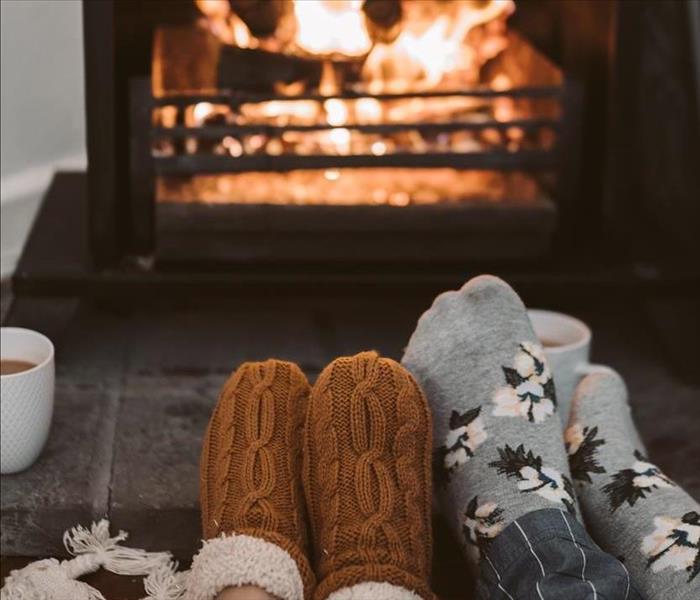 Get cozy
Get cozy
There’s no denying, it’s cold right now!! Our Boone County office has created the perfect playlist to keep you warm during these chilly winter days. We recommend cozying up next to a warm fireplace with a nice cup of hot cocoa, a fuzzy blanket, and our office’s favorite playlist Singin’ In the Rain on Spotify.
Just make sure you’ve got that flue open! A puff back could throw a kink in your relaxing weekend.
Smoke on the Water- Deep Purple
Set Fire to the Rain- Adele
We Didn’t Start the Fire - Billy Joel
Feel That Fire - Dirks Bentley
Fire - Black Pumas
Ashes on your Eyes - Deb Talan
Fire - The Ohio Players
Burning Down the House - Talking Heads
Fire and Rain - James Taylor
Ring of Fire Johnny Cash
Girl On Fire - Alicia Keys
Heaven’s on Fire - KISS
The Sun is Burning - Simon and Garfunkel
Into the Fire - Sarah McLachlan
The Stranger at My Door - Brandi Carlile
Light My Fire - The Doors
Rooms on Fire - Stevie Nicks
Great Balls of Fire - Jerry Lee Lewis
I’m On Fire - Bruce Springsteen
Dont neglect furnace maintenance
12/30/2020 (Permalink)
With the cold, winter months among us, now is the time to make sure your home heating system is working properly. Like most things, safe and efficient operation is a function of regular maintenance and check-ups. There are several things you can do to keep your heating system in top working condition.
- Clean or replace the filter: A clogged filter causes the furnace to work much harder and deliver less heat!
- Make sure blower doors are replaced.
- Check the systems belts: Replace any belts that are worn or cracked.
- Check and make sure vents in the home are clear.
- Ensure that the exhaust flue to the outside of the home is clear.
These are just a few tips to help maintain a home’s furnace system. But regular maintenance and periodic checkups by a licensed heating professional are also beneficial for your furnace to remain efficient. Don’t wait until it is too late and risk having a break down when you need your furnace the most!
Merry Christmas! We are available 24/7
11/30/2020 (Permalink)
All of us at SERVPRO would like to take this time to express our sincere gratitude for those that make our success possible. We know that our accomplishments and achievements in the property restoration industry would not be possible without our dedicated employees, hard working colleagues in the restoration industry, and our trusting customers. We truly appreciate the efforts of all those that we work with day in and day out to help our customers in their time of need. We would like to say thank you for your continued loyalty and support. We truly appreciate working with you and our sincere wish is that you find peace, joy, hope, and happiness now and in the new year ahead!
Merry Christmas!
Fires can be devastating. SERVPRO is here to help!
10/21/2020 (Permalink)
According to ready.gov, a fire can spread quickly, becoming life threatening in just two minutes. And in just five minutes, an entire home can be taken over by flames.
In the event of a fire it is important to know what precautions to take to help ensure that you escape safely.
- Stay low, crawling under the smoke to the exit
- Before opening a door, feel if it is hot. If it is hot, do not open the door and find another exit. If you do open the door, open it very slowly and be prepared to shut it quickly if smoke or fire is present.
- Tell firefighters right away if pets are trapped inside.
- If you are unable to escape, close all doors, cover vents and cracks around doors with cloth, call 911 explaining where you are, and signal from a window with a light cloth or flashlight.
- If your clothes catch fire, stop, drop, and roll!
Fires can be devastating, spreading quickly and leaving little time to plan an escape. Being prepared by learning important safety measures and planning escapes can help ensure safety in the unfortunate event of a fire disaster.
SERVPRO provides emergency service following fire damage. Our fire technicians respond quickly to secure the site and can help restore the structure as well as its contents following a fire.
Avoid BBQ Grill Fires Labor Day Weekend
8/25/2020 (Permalink)
Today we honor the achievements of the labor movement and the strength of American workers! Some also celebrate Labor Day as the official end of summer, the start of fall, or the final day to wear white. But whatever angle you take for your celebration, we want you to have a safe and happy holiday!
Be sure to practice safety tips with outdoor grilling or fire pits. Keep the grill or open flames a safe distance from anything that can catch fire. And always keep the children and pets away from the hot fire. Have a fire extinguisher available should an accident happen!
If you are traveling somewhere to celebrate, remember no drinking and driving! Keep an emergency supply kit or a first aid kit in your car. And always buckle up!
And don’t forget to follow safety guidelines in the swimming pool! Be aware of the weather conditions, keep an eye on the children, and always swim with a buddy!
Enjoy the holiday and remember we are always available 24 hours a day if you find yourself in need of emergency service!
Limiting damage after a fire
6/19/2020 (Permalink)
Even if a fire in a home or business is contained to one floor, the damage from the fire may affect other floors of the building as well. Soot and smoke can travel throughout the structure leaving a trail of damage behind. If the damage is not handled properly, long-term effects can result, adding to an already stressful situation.
After contacting SERVPRO of Boone County, there are a couple of steps you can take to help avoid further damage to your property. First of all, keep movement throughout the building to a minimum. This will help avoid tracking the soot throughout other areas of the building. And secondly, place clean towels or linens on the carpeted traffic areas. Realizing that there will be some movement within the building during the restoration process, this will help prevent additional soiling.
The SERVPRO of Boone County fire technicians are highly trained and well-equipped to handle the cleanup and care of your home or office building and its contents following a fire incident. Before attempting to clean the fire damage yourself, contact us for your fire restoration needs. CLICK HERE to learn more!
BBQ Grill Fire Safety
5/12/2020 (Permalink)
According to the U.S. Fire Administration, grill fires cause an estimated $37 million in property loss each year. Patios, terraces, screened-in porches and courtyards are all leading home locations for grill fires.
While outdoor barbecues can be fun times with family and friends, they can also present fire hazards if certain precautions are not taken. The misuse of outdoor grills is one of the leading causes of home fires during the warmer months.
A grilling mishap would definitely put a damper on family gatherings and outdoor fun! So, we would like to share some important grilling safety tips. Knowing and following even a few tips can help avoid a fire disaster.
- Only use grills outdoors.
- Keep grills away from siding and deck railings.
- Clean grills often and remove grease or fat build-up.
- Make sure the gas grill lid is open before lighting.
In the unfortunate event of a fire disaster at your property, SERVPRO is Here To Help! Our technicians are available 24/7 to provide emergency service!
Take Proactive Cleaning Precautions!
3/18/2020 (Permalink)
As we all know, the CDC is responding to a respiratory disease outbreak caused by the coronavirus (COVID-19). This outbreak is prompting a lifestyle change for everyone as we attempt to slow the spread of the virus across the country.
It is believed that the virus is spread mainly from person-to-person or through respiratory droplets when an infected person coughs or sneezes. And the World Health Organization recommends basic proactive measures like frequent hand washing, social distancing, and good respiratory hygiene. Although not thought to be the main way the virus spreads, it may be possible that a person can get COVID-19 by touching a surface or object that has the virus on it and then touching their own mouth, nose, or possibly their eyes.
How can SERVPRO of Boone County Help?
Trained in adhering to the highest cleaning and sanitation standards, our professionals offer cleaning services including the removal of biohazard contaminants. While following the guidelines provided by the CDC and local authorities, we can perform a PROACTIVE CLEANUP that involves facility or structure cleaning and disinfection where there is no known threat of COVID-19 contamination or exposure. There is currently no product tested against this particular strain of the coronavirus, however, our proprietary cleaning agent, SERVPROXIDE, is an EPA-certified, hospital-grade disinfectant that has demonstrated effectiveness against viruses similar to coronavirus (SARS-CoV-2/COVID-19) on hard, non-porous surfaces.
The CDC encourages cleaning of high-touch surfaces such as counters, tabletops, doorknobs, light switches, etc. While proactive cleaning will not prevent or protect a building from future contamination if an infected person was to enter the building following the cleaning, it may help minimize the spread of germs by disinfecting high-touch areas and surfaces.
Contact us today to take proactive cleaning precautions and schedule your cleaning!
SERVPRO of Boone County 859-746-3400
Practice Safety in the Kitchen this Holiday Season & Always!
12/16/2019 (Permalink)
During the holidays, to celebrate the season, families and friends will gather to enjoy delicious holiday dinners together. With cooking being the number one cause of home fires, it is very important to follow specific cooking safety tips in order to help avoid a home fire disaster.
The American Red Cross offers many suggestions to help avoid fires in the kitchen:
- Never leave cooking food unattended.
- If simmering, baking, roasting or broiling food, check it regularly.
- Use a timer as a reminder that the stove or oven is on.
- Don’t wear loose clothing or sleeves while cooking.
- Keep children and pets away from the cooking area.
- Keep flammable items away from the stove or oven.
- Clean cooking surfaces on a regular basis to avoid the buildup of grease.
- Have a fire extinguisher on hand and understand how to use it properly.
- Make it a routine to check the kitchen before leaving the home or going to bed each night to ensure that the stove and oven is turned off.
- Install working smoke alarms near the kitchen and on each floor of the home, near bedrooms.
- Replace smoke alarm batteries regularly so that they are always in good working order.
In the unfortunate event of a fire disaster, SERVPRO of Boone County will be there to help, anytime, day or night. We are locally owned and operated and are ready and able to respond quickly to any fire damage emergency this holiday season and always.
Happy Halloween from SERVPRO of Boone County!
10/31/2019 (Permalink)
Happy Halloween to all our valued customers, coworkers, and friends! Here are just a few quick tips to help ensure your night isn’t spoiled by an accident or mishap! Have the kids wear reflective tape or stickers and always cross the street in a crosswalk…carrying flashlights is also suggested. These tips are always important, but especially if it happens to be a dark, stormy night! For better vision, try makeup or face paint instead of masks. And for fire prevention, costumes should be flame-resistant or flame-retardant and decorations should never be placed near flames. A battery-operated light to light up your carved pumpkin is also a much safer option than a real candle. Don’t forget to check the kids’ candy for anything that looks suspicious. And if you are out driving during trick or treating hours, use extra caution. Be safe and enjoy the night!
SERVPRO of Boone County
SERVPRO OF BOONE COUNTY to Offer 3 Hour Continuing Education Course for OHIO Credits on September 19th from 8:30am - 11:30am
9/2/2019 (Permalink)
We are excited to be hosting an upcoming Greater Cincinnati Insurance Board continuing education insurance credit course! The class is entitled, “Ohio FAIR Plan Seminar with Jim McKee, CPCU, AIS, API, AIM.” This seminar will give the attendees valuable information about the Ohio FAIR Plan Underwriting Association. It will provide an overview of Ohio FAIR Plan procedures, policies, coverages and other information. Topics covered will include types of policies written, coverages, application, underwriting procedures, claims as well as other helpful information.
This course is approved for 3 credit hours in OHIO only and it will take place at our Cincinnati, Ohio location at 2115 Schappelle Lane, Cincinnati, OH on Thursday, September 19, 2019 from 8:30am to 11:30am.
CLICK HERE to find out more information and to register!
Limit Damage After a Fire
8/26/2019 (Permalink)
Even if a fire in a home or business is contained to one floor, the damage from the fire may affect other floors of the building as well. Soot and smoke can travel throughout the structure leaving a trail of damage behind. If the damage is not handled properly, long-term effects can result, adding to an already stressful situation.
After contacting SERVPRO of Boone County, there are a couple of steps you can take to help avoid further damage to your property. First of all, keep movement throughout the building to a minimum. This will help avoid tracking the soot throughout other areas of the building. And secondly, place clean towels or linens on the carpeted traffic areas. Realizing that there will be some movement within the building during the restoration process, this will help prevent additional soiling.
The SERVPRO of Boone County fire technicians are highly trained and well-equipped to handle the cleanup and care of your home or office building and its contents following a fire incident. Before attempting to clean the fire damage yourself, contact us for your fire restoration needs. CLICK HERE to learn more!
Helpful Tips for Safer Grilling
7/29/2019 (Permalink)
With the summer season, comes family picnics and outdoor grilling. According to the U.S. Fire Administration, grill fires cause an estimated $37 million in property loss each year. Patios, terraces, screened-in porches and courtyards are leading home locations for grill fires.
SERVPRO of Boone County would like to share the following grilling safety tips to help prevent outdoor cooking fire damage.
- Only use grills outdoors
- Keep grills away from siding and deck railings.
- Clean grills often and remove grease or fat build-up.
- Make sure the gas grill lid is open before lighting.
- Always have a three foot safe-zone around grills.
- Dispose of coals after they have cooled in a metal can.
- Never leave grills unattended.
Knowing and following even a few fire safety grilling tips can help everyone have a safer and happier summer. In the event that you experience a grilling mishap and have a fire damage situation at your home, give us a call for quick, professional help!
SERVPRO of Boone County 859-746-3400
SERVPRO OF BOONE COUNTY TO OFFER CONTINUING EDUCATION COURSE JULY 9TH
6/24/2019 (Permalink)
We are hosting a Greater Cincinnati Insurance Board continuing education insurance credit course entitled, “What Happens After the Loss with Tom Ryan, AIC.” This seminar will give an overview of the basic rules of evidence as they are used in the claims handling process. This information will help the agent in advising policyholders to understand the investigations required in settling claims. It will give the attendees knowledge about the various aspects of claims handling. The basic laws of evidence, the relevancy of this evidence and how this evidence is used to protect the client will be discussed. The instructor for this course is Tom Ryan, AIC and it is approved for 6 credit hours in OHIO and KENTUCKY. The course will take place at our Cincinnati, Ohio location at 2115 Schappelle Lane, Cincinnati, OH on Tuesday, July 9, 2019. from 8:30am to 3:30pm.
CLICK HERE for more information and to register!
Use Caution When Burning Candles in the Home
1/28/2019 (Permalink)
In the winter months many enjoy enhancing their rooms with beautiful scented candles hoping to bring a calm and cozy feeling to their home. Candles are a very popular accessory to home décor, but can also cause serious damage to homes if not used with caution. As a matter of fact, according to the National Candle Association (NCA), accidental candle fires account for approximately four percent of all U.S. residential fires.
The NCA provides a list of Candle Safety Rules with the hopes of reducing residential fire incidents caused by candle mishaps. Several of these tips include:
- Always keep a burning candle within sight.
- Never burn a candle on or near anything that can catch fire.
- Keep burning candles out of the reach of children and pets.
- Trim candlewicks to ¼ inch each time before burning.
- Keep burning candles away from drafts, vents and ceiling fans.
- Never touch or move a burning candle when the wax is liquid.
- Never extinguish a candle with water.
- Never use a candle as a night light.
Burning candles can have a calming effect, bringing a sense of peace and relaxation after a long day. The National Candle Association provides many more safety tips and suggestions and can be found on their website at candles.org. Help protect your home and safety by following these suggestions when enjoying your candles!
Be Aware of Fire Risks and Christmas Trees
12/3/2018 (Permalink)
Unfortunately, the holiday season is a time of the year that we see an increase in home fires. As families decorate their Christmas trees, they often do not realize the risk of fire that accompanies having a live Christmas tree in the home.
If a live Christmas tree is a part of your holiday traditions, there are some safety precautions to follow that can help guard against a home fire.
- Be sure to choose a fresh tree.
- Keep the tree away from any source of heat in the home.
- Make sure the tree base is always filled with water.
- Ensure that all Christmas lights are turned off at bedtime.
- Avoid using damaged lights.
- Dispose of the tree when it begins to lose its needles.
We wish for everyone to have a safe and happy holiday season. However, in the unfortunate event of a fire damage emergency, remember that SERVPRO of Boone County is always close by and ready to help, day or night, and even on holidays!
Happy Halloween from SERVPRO of Boone County
10/31/2018 (Permalink)
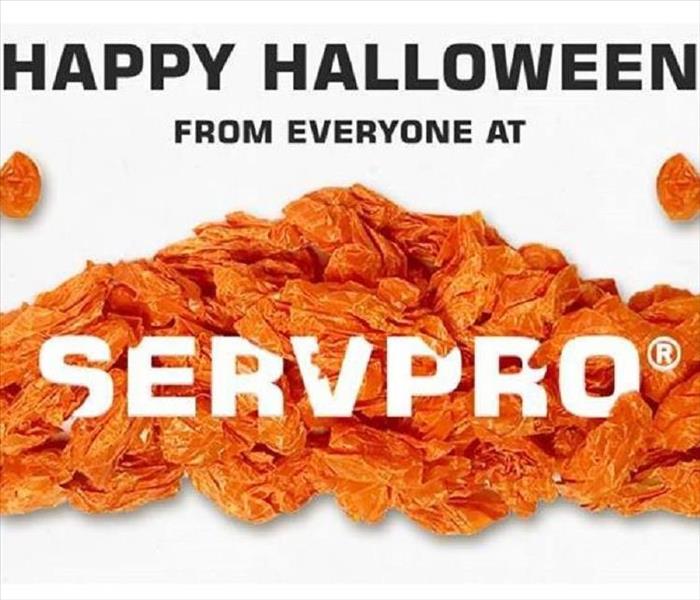
We just want to wish all of our valued customers, coworkers, and friends a very happy and safe Halloween! Be cautious and practice safety tips so that a fun night isn’t spoiled by an accident or mishap! Make sure the kids wear reflective tape or stickers and always cross the street in a crosswalk. Makeup and face paint is always safer than masks and carrying flashlights is also a good idea. Make sure costumes are flame-resistant or flame-retardant and keep decorations away from open flames. A battery operated light inside the jack-o-lantern is also a much safer option than a real candle. Be sure to inspect the kids’ candy and throw away anything that is not sealed, homemade, or looks suspicious. And if you must be out driving during trick or treating hours, use extra caution. Drive slower than normal, keeping an eye out for kids darting between cars and into the road. Halloween can be a great time with the kids, dressing up, making decorations and trick-or-treating. Be safe and enjoy the night!
SERVPRO of Boone County
Exposure to Soot Can Be Dangerous
10/22/2018 (Permalink)
After facing a fire damage situation, some homeowners might think they can save some money by handling the cleanup themselves. But what many do not realize is that exposure to soot can actually be dangerous.
Soot is the fine black particles composed of carbon and produced by the incomplete combustion of coal, oil, wood, or other fuels. It can consist of toxic acids, chemicals, metals, soils, and dust. The toxic composition coupled with the fact that soot particles are extremely tiny is what makes it so dangerous. The airborne particles are virtually invisible so one can unknowingly be affected by inhalation or ingestion. It can travel into the lungs and bloodstream and has the potential to do serious damage.
So unfortunately, safety risks from a fire do not end once the fire is out. During the fire damage restoration process, it is important to have proper safety equipment and ventilation procedures to ensure the safety of those exposed. The SERVPRO of Boone County technicians have specialized fire damage restoration training and expertise to handle the cleanup in a safe and effective manner. So if you are faced with a fire damage situation, let the professionals do the work! Call us at (859)746-3400 and we can make it “Like it never even happened.”
Need OH or KY Credits? Here is an upcoming opportunity!
10/19/2018 (Permalink)
We are hosting a Greater Cincinnati Insurance Board continuing education insurance credit course entitled, “Understanding the Legal Process-Rules of Evidence w/ Tom Ryan, AIC.” This seminar will give an overview of the basic rules of evidence as they are used in the claims handling process. Those in attendance will learn information to help their policyholders understand the investigations required in settling claims. Topics will include claims litigation, the legal system, techniques in processing a claim, basic laws of evidence, and how this evidence is used to protect the client.
This course is for OHIO and KENTUCKY credits and will be held at our Forest Park, Ohio location at 2115 Schappelle Lane, Forest Park, Ohio, 45240 on Wednesday, November 7th, 2018 from 8:30am to 3:30pm.
CLICK HERE for more information and to register!
Happy Labor Day from SERVPRO of Boone County!
9/3/2018 (Permalink)
Today we honor the achievements of the labor movement and the strength of American workers! Some also celebrate Labor Day as the official end of summer, the start of fall, or the final day to wear white. But whatever angle you take for your celebration, we want you to have a safe and happy holiday!
Be sure to practice safety tips with outdoor grilling or fire pits. Keep the grill or open flames a safe distance from anything that can catch fire. And always keep the children and pets away from the hot fire. Have a fire extinguisher available should an accident happen!
If you are traveling somewhere to celebrate, remember no drinking and driving! Keep an emergency supply kit or a first aid kit in your car. And always buckle up!
And don’t forget to follow safety guidelines in the swimming pool! Be aware of the weather conditions, keep an eye on the children, and always swim with a buddy!
Enjoy the holiday and remember we are always available 24 hours a day if you find yourself in need of emergency service!
SERVPRO of Boone County (859) 746-3400
September is National Preparedness Month!
8/24/2018 (Permalink)
The month of September, also recognized as National Preparedness Month, is right around the corner! Different types of disasters and emergencies happen throughout the year in homes, businesses and communities and the goal of acknowledging National Preparedness Month is to remind everyone to take steps to be better prepared for them.
There are many suggested ways to prepare for a disaster or an emergency event. For example, home and business owners can install smoke alarms and carbon monoxide detectors and practice fire escape plans or tornado drills with their families or employees. They can put together an emergency kit and learn basic life-saving skills like CPR and first-aid. Schools and businesses can develop an Emergency Ready Profile (ERP). In the event of a disaster, this profile will help minimize business interruption by having an immediate plan of action already in place. (CLICK HERE to learn more about developing an ERP with SERVPRO.) Learning the evacuation routes for the area and reviewing insurance policies are also ways to prepare. Setting up an emergency savings account is also helpful because the unexpected expense of a disaster can be devastating.
Disaster preparedness can seem overwhelming at times. These are just highlights of some of the suggestions of ways to prepare. More helpful information can be found with resources like the ready.gov and fema.gov websites. While you may not be able to take every suggestion, doing even a few can help!
Keep the Bugs Out of Your Firewood & Your Home!
2/12/2018 (Permalink)
There is nothing more relaxing than cozying up near a warm, crackling fire on a cold winter day. A wood-burning fireplace, in the comfort of your own home, presents the perfect setting to snuggle up and read a book, to watch movies and create cozy memories with friends and loved ones. But firewood, while being the fuel behind your relaxing fire, is also attractive to insects as a source of food and shelter. So it’s possible that you might just be welcoming a few unwanted guests, hitching a ride on the firewood, right into your home!
KEEP PESTS OUT OF YOUR FIREWOOD!
There are a few ways you can discourage insects from camping in your firewood and then riding into your home.
- Store Wood a Good Distance from your Home: In the cold months, it is very tempting to store the wood pile close to your home, or even inside your home. Avoid this! Insects love to hide out in the pile, and keeping it close or inside your home is an open invitation.
- Cover your Wood Pile: Wet firewood attracts insects. So it is important to protect firewood from the elements and let it dry. Use a tarp or cover on your firewood.
- Elevate your Firewood: It is very difficult to keep wood dry if it is lying on the ground. Find a way to elevate your pile by using some sort of support or firewood holder.
- First in First Out: If you always use the wood that is placed on the top of the pile, the old, unused wood at the bottom will make a perfect home for pests. Make sure all the wood gets used regularly by rotating your pile.
- No Pesticides: While it is tempting to treat bug-infested wood with pesticides, this actually does more harm than good. Pesticides will cause the insects to burrow deeper into the wood to escape. Additionally, if you burn wood treated with pesticides, harmful chemicals will release into the air and cause a health risk.
- Make two trips: Who likes to run outside in the cold every time you need another log for the fire? While it’s convenient to carry in the extra wood all at once, this invites pests into your home. Leaving wood lying inside your home could result in the bugs joining your party! Avoid this by only bringing in what you need and make another trip when it’s time.
A peaceful fire in your wood-burning fireplace is a great way to stay warm and relax during the cold winter months. Avoid the threat of inviting insects into your home by taking these precautions when using and storing your firewood!
Do you have a live Christmas tree? If so, here are some fire safety tips...
12/18/2017 (Permalink)
In the fire restoration industry, the holiday season can be a time when we see an increase in home fires. Many families love the tradition of picking out a live Christmas tree, bringing it home and beautifully decorating it for the holiday season. But what some fail to take into consideration is the fire hazard that comes along with having a live tree.
The American Christmas Tree Association offers the following safety precautions to help avoid home fires associated with live Christmas trees.
- Choose a tree with fresh, green needles that do not fall off when touched. Fresh trees are less likely to ignite.
- Always place the tree away from heat sources like fireplaces, radiators, heat vents, and lights.
- To keep the tree from drying out, make sure the tree base is always filled with water.
- Make sure all Christmas lights are safety tested and avoid using damaged lights.
- At bedtime, turn the Christmas tree lights off.
- When the tree begins to lose its needles, it is time to properly dispose of the tree.
So this year, if a live Christmas tree is included in your decorating plans, make sure to follow these guidelines to help avoid a home fire disaster!
When is the best time to take down the live Christmas tree?
12/11/2017 (Permalink)
According to The National Fire Protection Association (NFPA), it is very important to timely dispose of live Christmas trees following the holidays. Live Christmas trees are very flammable and the longer they remain in the home, the more they dry out, increasing the threat of a home fire. A dried out Christmas tree can be engulfed in flames in a matter of seconds.
NFPA statistics show that nearly forty percent of home fires that start as a result of a Christmas tree occur in the month of January. So even though people may want to continue with the holiday festive spirit and leave the beautiful tree up in their home longer, it is best to remove it in a timely manner and avoid the risk of fire.
So as your holiday season winds down this year and it’s time to consider when to take down the decorations, remember the importance of fire safety and dispose of the live tree before it becomes a bigger fire risk.
Happy Holidays!
Keep Kids Safe...Home Fire Safety Tips
10/31/2017 (Permalink)
Safe Kids Worldwide is a nonprofit organization that works to keep kids safe. According to safekids.org, home fires account for nearly 90 percent of all fire-related deaths and at least one child dies in a home fire every day.
Safe Kids Worldwide offers many tips to help protect kids and families from home fires and bring awareness to actions that can be taken to prepare for and know how to act in the event of a fire. This alone, will help save lives. First and foremost, working fire alarms are critical to staying safe. Smoke alarms that are working properly should be installed on every level of the home. Efforts should be made to teach kids never to play with matches or lighters. Always store them out of the reach of children. Create and practice an escape plan. In this plan, be sure to include two ways out of every room. Teach the kids how to respond if they hear the fire alarm. Make them aware of the importance of staying low and getting out as quickly as possible.
Following these tips can be very helpful in keeping families safe in the event of a home fire. Being prepared and taking precautions before an actual fire emergency can help families know exactly what to do if they find themselves in a fire emergency situation.
Halloween Fire Safety Tips
10/23/2017 (Permalink)
Creative costumes, pumpkin carving, and spooky decorations all make Halloween fun for the kids. But what could spoil a good time more than a fire accident?!
NFPA.org provides a few simple fire safety tips to help keep the kids out of fire danger on Halloween.
- Keep costumes flame-resistant or flame-retardant. And for home-made costumes, choose materials that will not easily ignite.
- Many fall themed decorations, like cornstalks and dried flowers are highly flammable. Always keep them away from open flames.
- Use a battery operated light inside of carved pumpkins instead of a real candle.
- Keep pathways and exits clear of decorations so that nothing is blocking escape routes.
- Stress to the kids the importance of staying away from open flames.
- Review and practice with the kids how to stop, drop, and roll just in case their clothing would catch on fire.
SERVPRO of Boone County wishes you a very happy and SAFE Halloween!
Join in National Preparedness Month!
9/4/2017 (Permalink)
Did you know that September is National Preparedness Month? National Preparedness is observed in the United States every September with the hopes of encouraging Americans to prepare for emergencies in their homes and businesses.
How Can You Prepare?
Disasters usually strike unexpectedly, rarely giving any warning signs. But with a little thought and planning ahead, you can be better prepared for a disaster.
Disasters in the Home
No one expects a home fire. But there are steps you can take to be prepared just in case! Do you have an escape plan? Or how about a family meeting place outside the home? Do you have working smoke alarms in your home? How about a fire extinguisher? These are all ways to plan ahead and be better prepared for a fire disaster in your home.
A flooded home can also come unexpectedly. Have you checked and maintained the sump pump? How about the gutters on your home…Are they clean? Is your roof in good condition? Do you have your insurance agent’s contact information handy? How about the SERVPRO of Boone County phone number? You might be in need of clean up and restoration!
Disasters in the Business
Are you prepared if disaster strikes your business? Many business owners are caught off guard when disaster strikes, but there are steps to take to be better prepared. Does your insurance policy cover the type of disasters that are most likely to affect your business? Do you have a plan in place to help continue business operations during the recovery process? Is your business data backed up? Have you contacted SERVPRO of Boone County and developed an Emergency Ready Profile?
Join the nation this September by making an effort to be prepared! Take action now by planning ways to stay safe and lessen the impact a disaster might have on you, your family and your business!
SERVPRO of Boone County (859)746-3400
SERVPRO of Boone County Offers Continuing Education Course 9/20/17
8/24/2017 (Permalink)
SERVPRO of Boone County is offering a free continuing education insurance credit course entitled, “Understanding the Restoration Industry: Property Fire Damage Restoration.” This course is for agents needing OHIO credits and will be held at our Northwest Cincinnati location at 2115 Schappelle Lane, Forest Park, Ohio, 45240 on September 20, 2017 from 8:00am to 12:00pm with registration beginning at 7:30am. Please note that 100% attendance is required to receive CE credit for this course. Breakfast will be provided!
This course has been designed to teach and explain the special procedures used by professionals in mitigating and restoring fire damage claims. The purpose of the course is to provide insurance professionals a better understanding of what the insured is going through when they experience a fire damage situation as well as what is involved with the work performed by the mitigation vendor at fire damage work sites. Those in attendance will learn emergency tips which can drastically reduce the cost of the claim if performed in a timely manner and they will see examples of work performed to mitigate fire damage.
For reservations or more information, contact SERVPRO of Northwest Cincinnati at 513-541-3200.
Please RSVP by September 13, 2017!
Course Number: 43375-OH
Factors that Affect the Odors Left After a Fire
8/7/2017 (Permalink)
One of the most important concerns for complete restoration after a fire is controlling or eliminating the odors. When attempting to eradicate the odors after a fire, there are many factors that must be taken into consideration during the restoration process. These factors all impact the strength of the odor that is left behind.
Factors that Affect Fire Odor
- Size – Larger fires burn more objects and bring more smoke. With more smoke, there is stronger smell.
- Length – The longer a structure has been exposed to smoke, the more deeply the odor has seeped into porous materials.
- Space – The smaller the room where the fire occurs, the more intense and concentrated the smoke odor becomes.
- Items – Not all items smell the same when burning. For example, wood and plastic have very different smells and consistency. This needs to be considered during the restoration process.
Where the fire damage occurred and what items burned are the two main concerns in the fire restoration process. The technicians at SERVPRO of Boone County are fire restoration specialists and have the training, expertise, and equipment to restore your property back to pre-fire condition.
Is Your Dryer Vent Clean?
6/26/2017 (Permalink)
According to the U.S. Consumer Product Safety Commission, more than 15,000 fires start each year by the clothes dryer. When lint and debris build up in the dryer vent, a common fire hazard is created.
Signs That the Dryer Vent Needs Cleaning
According to ABC news, there are many signs that it is time to clean the dryer vent. Several of these signs include:
- Clothing does not dry completely after normal drying cycle.
- A musty odor is present in the clothing following the drying cycle.
- Clothing seems unusually hot to the touch after a complete drying cycle.
- Debris is present within the outside dryer vent opening.
- Large amounts of lint accumulate in the lint trap of the dryer.
Reduce the risk of a dryer vent fire by watching for these signs and regularly maintaining the dryer vent. Not only will the risk for a dryer vent fire be reduced, clothes will dry faster and smell better!
Use Extension Cords With Caution & Care
2/23/2017 (Permalink)
Extension cords are a very useful and common household item that, if not used with care, can pose a threat in the home. According to SixWise.com, there are three main risks presented with the use of extension cords:
- Fires
- Electrical Burns
- Tripping
Fires
The Consumer Product Safety Commission (CPSC) estimates that extension cords cause about 3300 residential fires each year. These fires are caused by short circuits, damaged cords, and overloading cords. These risks can be avoided by regularly checking and replacing old, damaged cords, not overloading cords or sockets, not running cords under rugs or near heaters, and just being aware when using extension cords for overheating.
Electrical Burns
According to the CPSC, electrical burns to the mouth accounted for half of the extension cord related injuries to young children. Plugs, outlets and cords can be very intriguing to young children who do not realize they are dangerous. Keep all extension cords out of reach of children!
Tripping
The CPSC claims that about half of extension cord related injuries involve fractures, lacerations, contusions, or sprains from people tripping over the extension cords and that the elderly are the most at risk for this type of injury. The solution to avoid this risk is to simply avoid placing extension cords in areas where people walk. Instead, run cords along walls or thread them behind tables or other furniture where they are out of the way.
Most people do not consider the dangers of extension cords until something actually goes wrong. Don’t make that mistake…Use your extension cords with caution and care!
DON'T BE LEFT IN THE COLD!
1/19/2017 (Permalink)
With the cold, winter months among us, now is the time to make sure your home heating system is working properly. Like most things, efficient operation is a function of regular maintenance and check-ups. There are several things you can do to keep your heating system in top working condition.
- Clean or replace the filter: A clogged filter causes the furnace to work much harder and deliver less heat!
- Make sure blower doors are replaced.
- Check the systems belts: Replace any belts that are worn or cracked.
- Check and make sure vents in the home are clear.
- Ensure that the exhaust flue to the outside of the home is clear.
These are just a few tips to help maintain a home’s furnace system. But regular maintenance and periodic checkups by a licensed heating professional are also beneficial for your furnace to remain efficient. Don’t wait until the cold hits and risk having a break down when you need your furnace the most!
SERVPRO OF BOONE COUNTY OFFERS CONTINUING EDUCATION COURSE 7/27/16
7/7/2016 (Permalink)
SERVPRO of Boone County is offering a free continuing education insurance credit course entitled, “Understanding the Restoration Industry: Property Fire Damage Restoration.” The course will be held at our Northwest Cincinnati location at 2115 Schappelle Lane, Forest Park, Ohio, 45240 on July 27th, 2016 from 8:30am to 12:30pm with registration beginning at 8:00am.
This course has been designed to teach and explain the special procedures used by professionals in mitigating and restoring fire damage claims. The purpose of the course is to provide insurance professionals a better understanding of what the insured is going through when they experience a fire damage situation as well as what is involved with the work performed by the mitigation vendor at fire damage work sites. Those in attendance will learn emergency tips which can drastically reduce the cost of the claim if performed in a timely manner.
For reservations or more information, contact SERVPRO of Northwest Cincinnati at 513-541-3200.
Course Number: 43375-OH, C34588-KY, 28814-IN
MAKE THIS MEMORIAL DAY THE START OF SAFER GRILLING
5/20/2016 (Permalink)
Happy Memorial Day from SERVPRO of Boone County!
Memorial Day is a day of remembrance for those who have died in service of the United States of America. It is a very important holiday, established to give us a time to honor and remember the men and women who have sacrificed their lives by serving our country.
Many people consider Memorial Day to be the unofficial start of the summer season. And with the summer season, comes family picnics and outdoor grilling. According to the U.S. Fire Administration, grill fires cause an estimated $37 million in property loss each year. Patios, terraces, screened-in porches and courtyards are leading home locations for grill fires.
SERVPRO of Boone County would like to share the following grilling safety tips to help prevent outdoor cooking fire damage in our Boone County neighborhoods of Florence, Hebron, Covington, Erlanger, Union, Richwood, and other surrounding communities.
Only use grills outdoors
Keep grills away from siding and deck railings.
Clean grills often and remove grease or fat build-up.
Make sure the gas grill lid is open before lighting.
Always have a three foot safe-zone around grills.
Dispose of coals after they have cooled in a metal can.
Never leave grills unattended.
Knowing and following even a few fire safety grilling tips can help everyone have a safer and happier summer. In the event that you experience a grilling mishap and have a fire damage situation at your Boone County home, give us a call for quick, professional help.
For fire damage repair and restoration in the local communities of Florence, Burlington, Hebron, Covington, Belleview, Erlanger, Union, Walton, Richwood, and Crittenden…Call SERVPRO of Boone County – (859) 746-3400
Restoring Items After Fire Damage
5/5/2016 (Permalink)
Regardless of the size, a fire in one room can damage belongings throughout an entire home. Personal belongings are treasures of life representing hard work and accomplishment. Photographs, books and other life momentos have a value that cannot be measured. When confronted with a fire loss, we at SERVPRO of Boone County understand the concerns about losing such treasures and about the expense of trying to replace them. Typically, restoring an item will save money versus replacing the item and, at the same time, relieve concerns of losing the priceless treasure.
So, if faced with a fire situation, follow these tips to increase chances of successful restoration:
1. Limit movement to prevent further damage.
2. Place clean towels or old linens on carpeted traffic areas to prevent more soiling.
3. Do not attempt to wash any walls or painted surfaces without first contacting SERVPRO of Boone County.
4. Do not attempt to shampoo carpet or upholstered furniture without first consulting SERVPRO of Boone County.
Let the professionals do the work.
SERVPRO PARTNERS WITH RED CROSS
4/29/2016 (Permalink)
Since March of 2013, SERVPRO has been a national sponsor of the American Red Cross and their Ready Rating Program. This program is a free, web-based program designed to help businesses, organizations and schools become better prepared for emergencies.
We are happy to announce that in January of 2016, SERVPRO renewed our commitment to the American Red Cross. The strategy is now focusing more on their Home Fire Preparedness Campaign by supporting Disaster Responders. This Campaign is aimed at reducing home fire deaths and injuries across the country. Our support of Disaster Responders enables them to assist affected families quickly by providing trained volunteers, supplies, emergency response vehicles, and resources to transform community sites into shelters.
SERVPRO of Boone County is proud to support the American Red Cross to ensure that families and communities are prepared for disasters…especially home fires. Our goal is to build awareness about steps families can take to be prepared in their own homes.
BE PREPARED FOR HOME FIRES!
4/29/2016 (Permalink)
According to redcross.org, 60% of house fire deaths occur in homes with no working smoke alarms. In the event of a home fire, working smoke alarms in conjunction with a practiced fire escape plan can save lives by allowing families to escape quickly and safely in an emergency situation.
The following are tips regarding the installation and maintenance of smoke detectors:
Install smoke detectors on every level of the home.
Smoke alarms should be installed away from the kitchen and at least 10 feet from a cooking appliance to avoid false alarms.
Smoke alarms should be tested at least once a month.
Batteries should be replaced in all smoke alarms at least once a year.
All smoke alarms should be replaced after 10 years.
In addition to working smoke alarms, a family escape plan is also important to home fire safety and everyone in the household should be involved in the planning process. The following are guidelines when creating a home fire escape plan:
Make sure that all family members know two ways to escape from each room of the home.
Have a designated meeting place outside for all family members in the event of a fire.
Practice the escape plan at least twice a year and at different times of the day.
Practice waking up to smoke alarms, low crawling, and meeting outside.
While home fires can be terrifying, working smoke alarms in addition to a practiced escape plan play a vital role in reducing fire deaths.

 24/7 Emergency Service
24/7 Emergency Service













